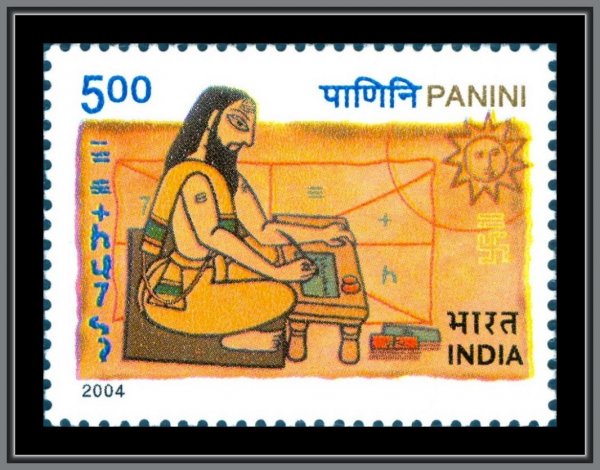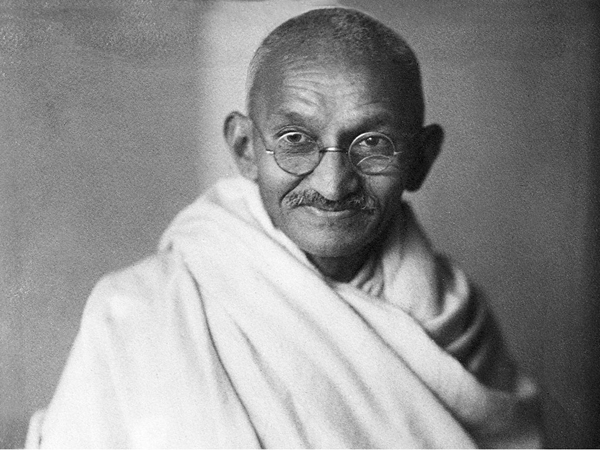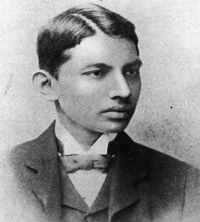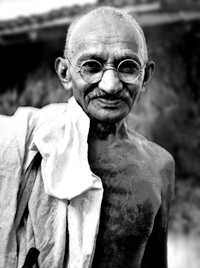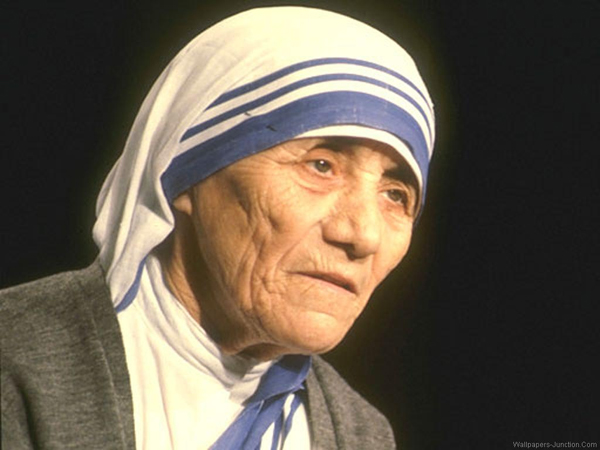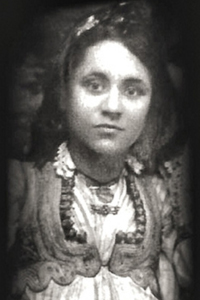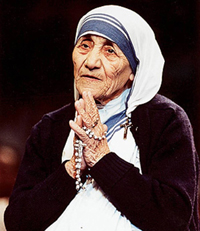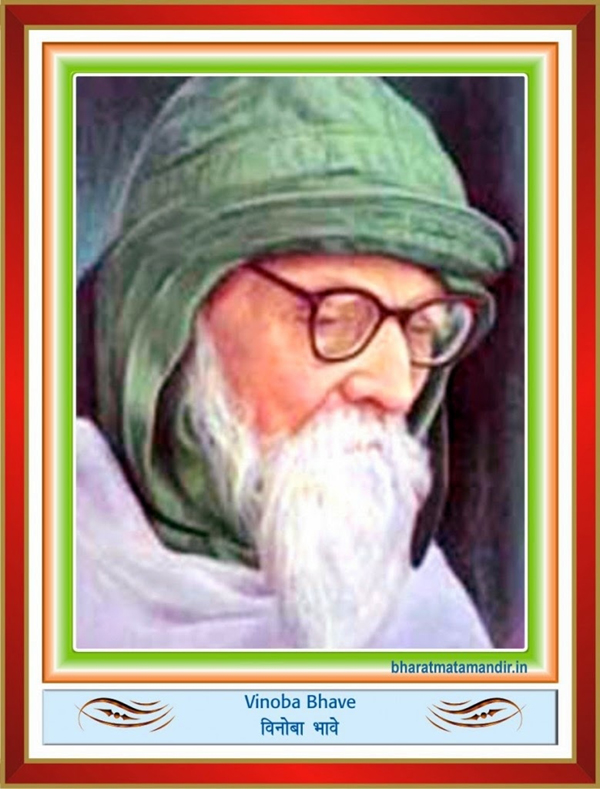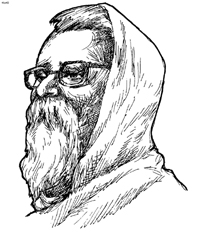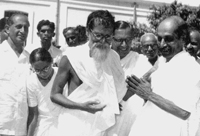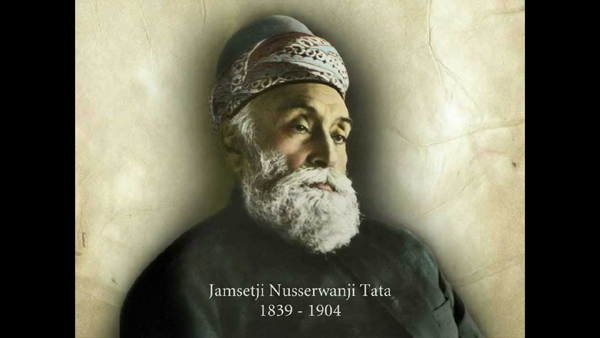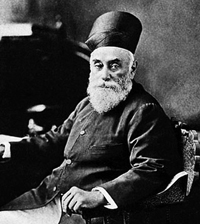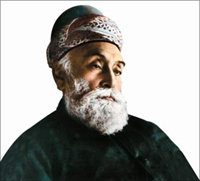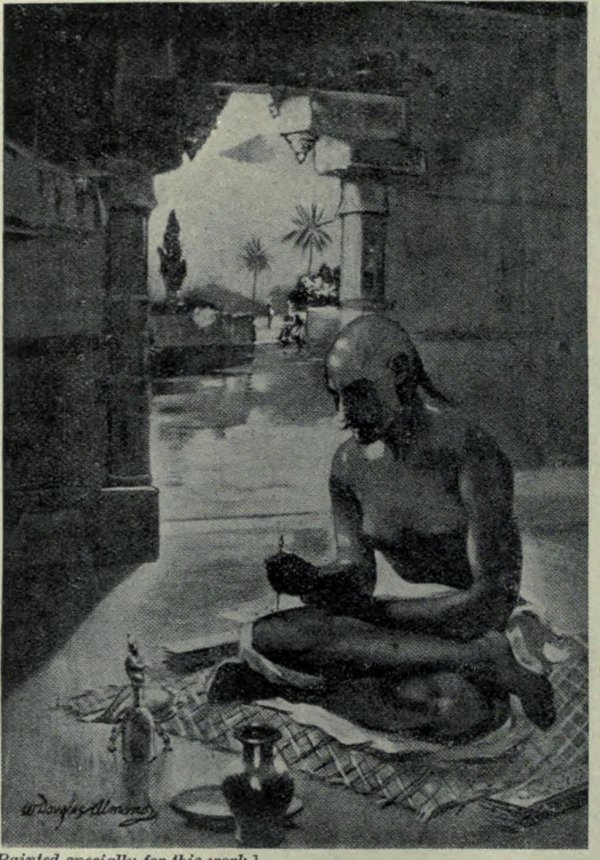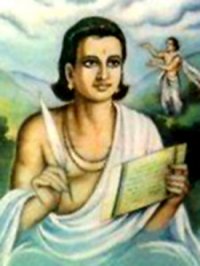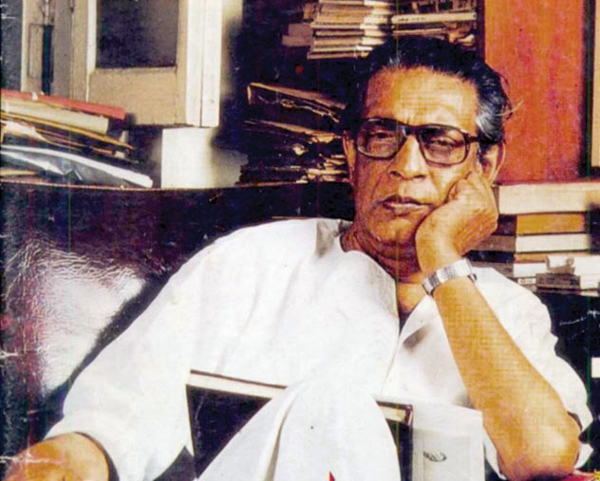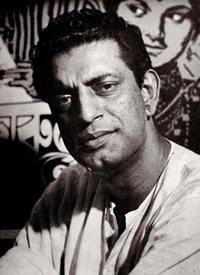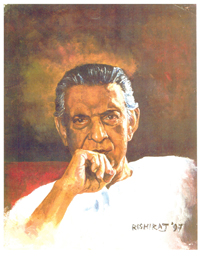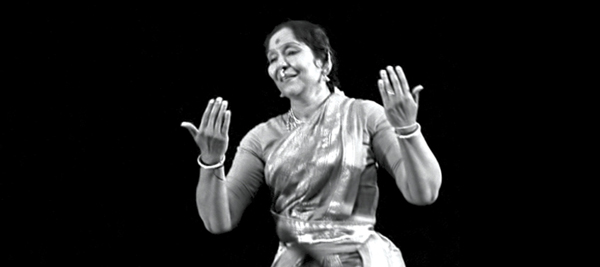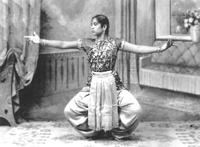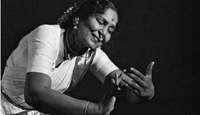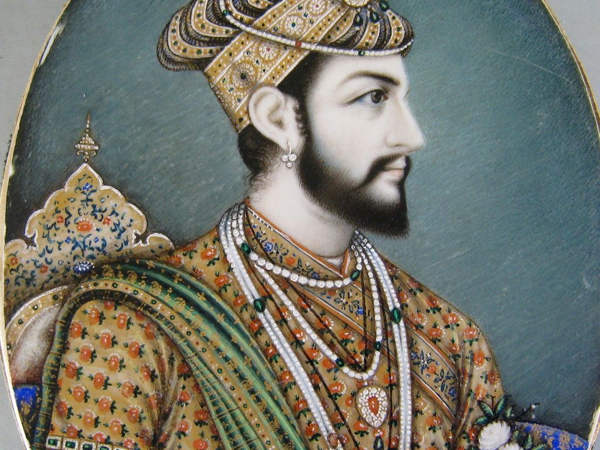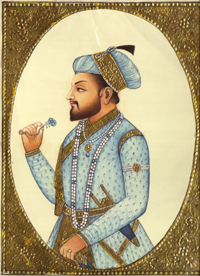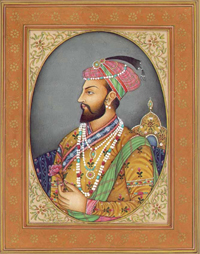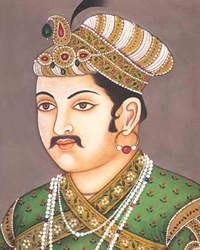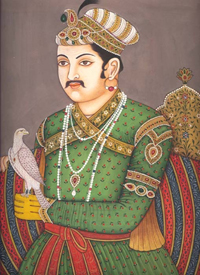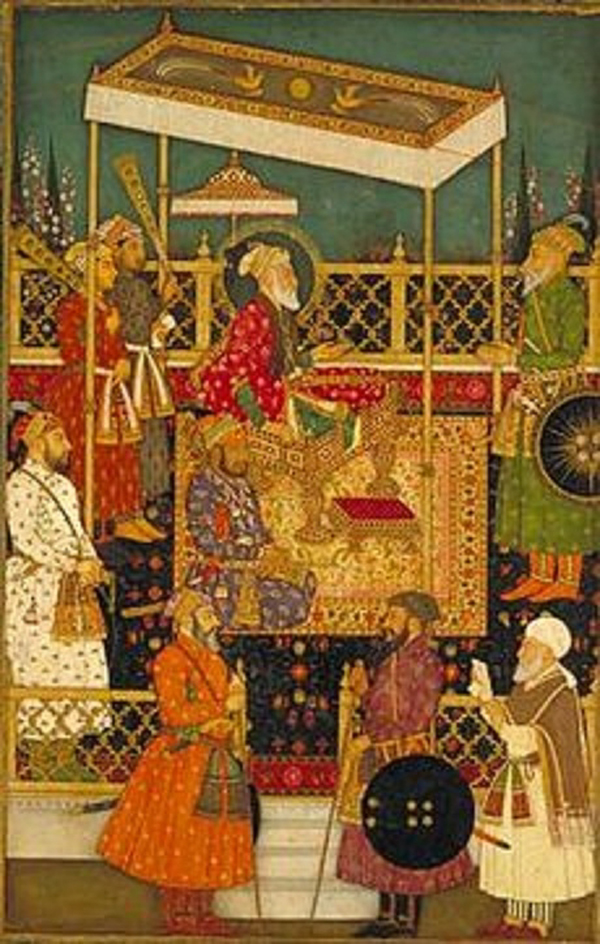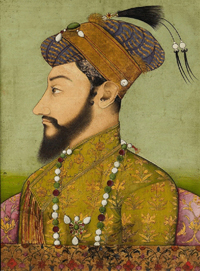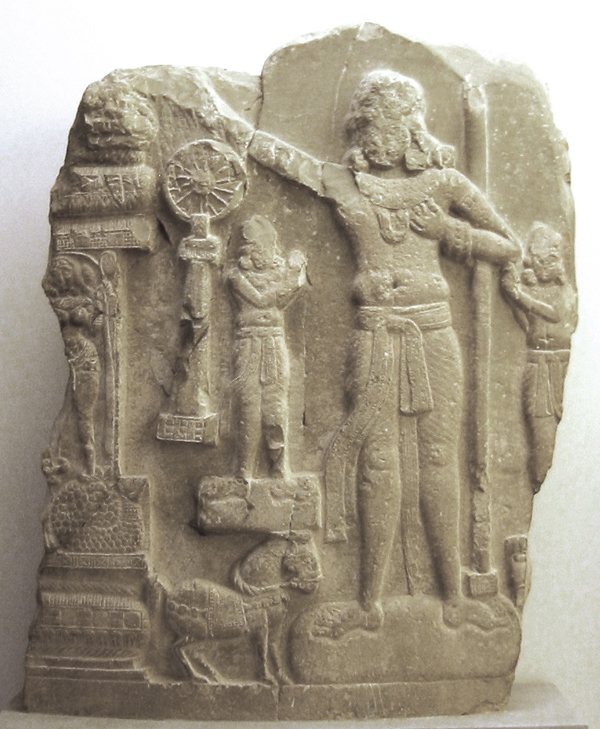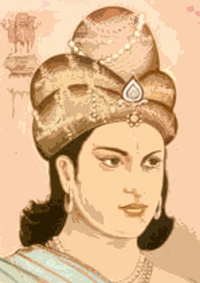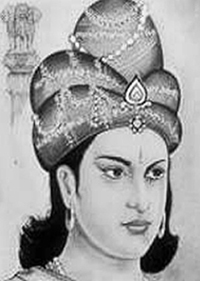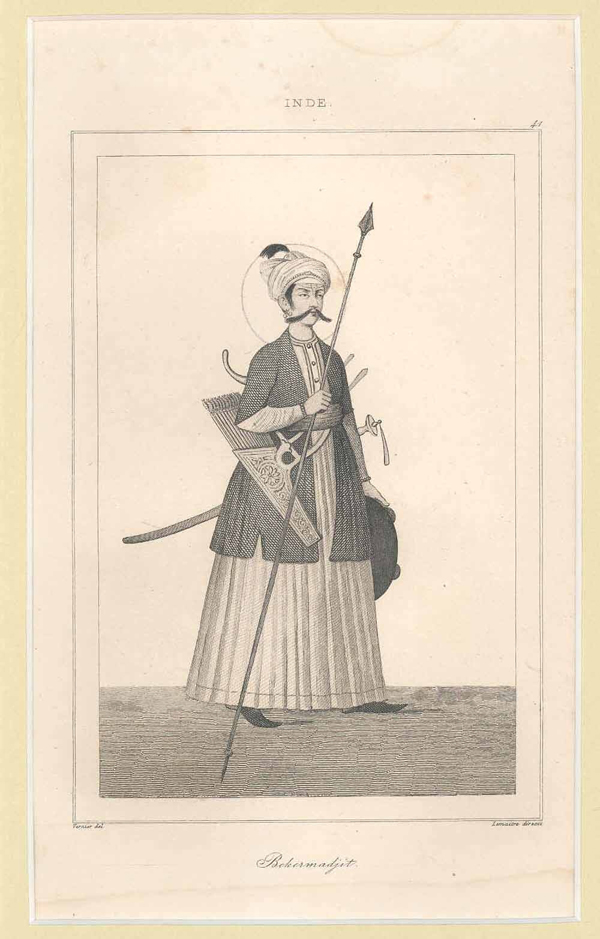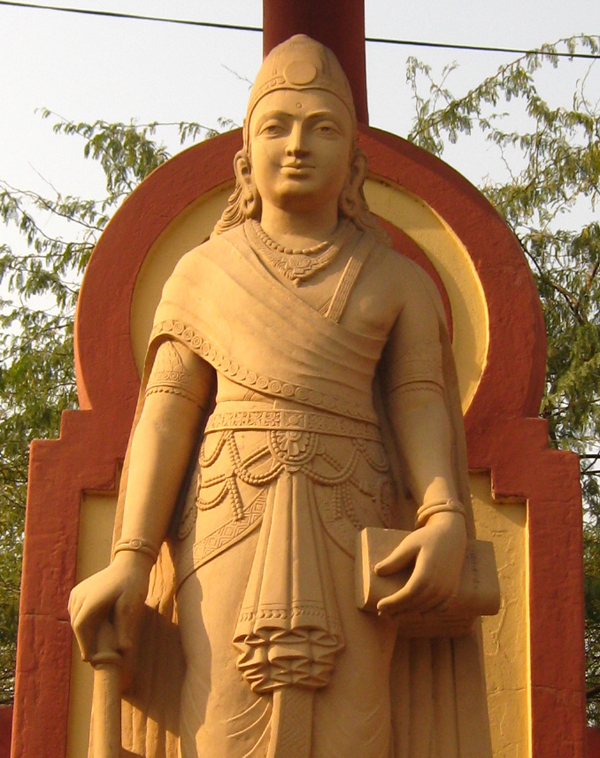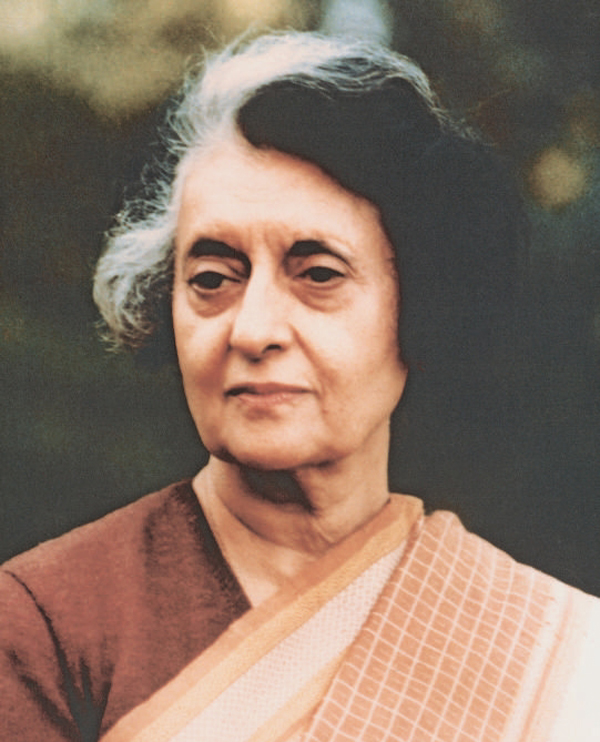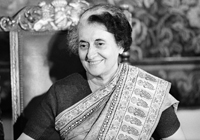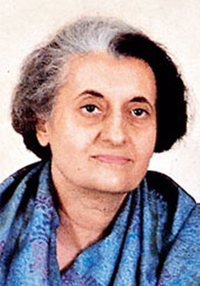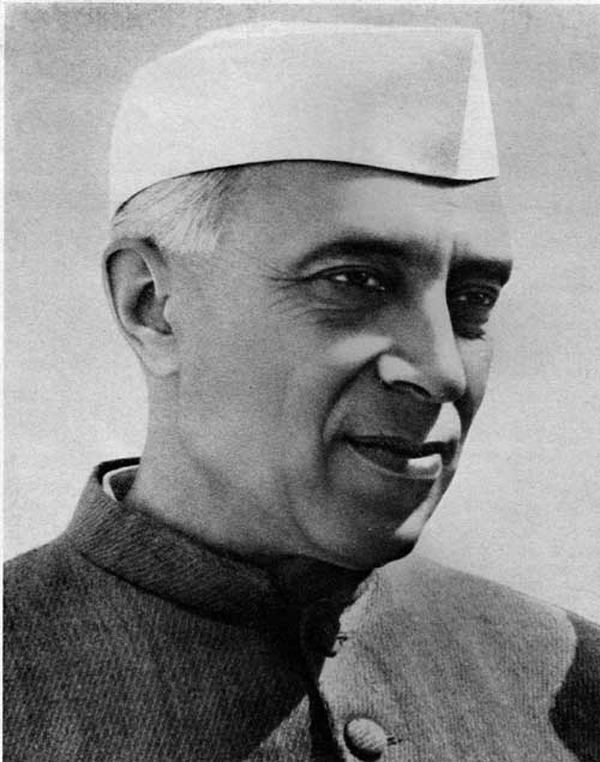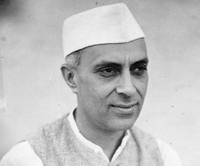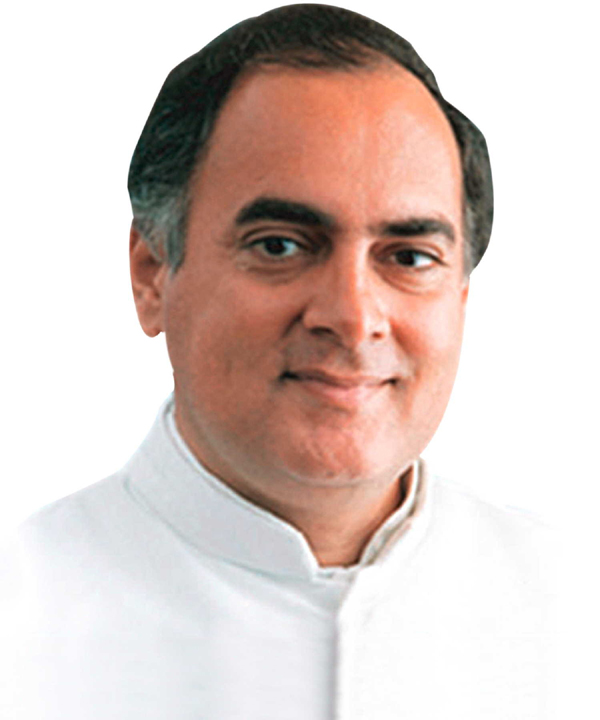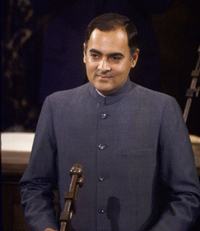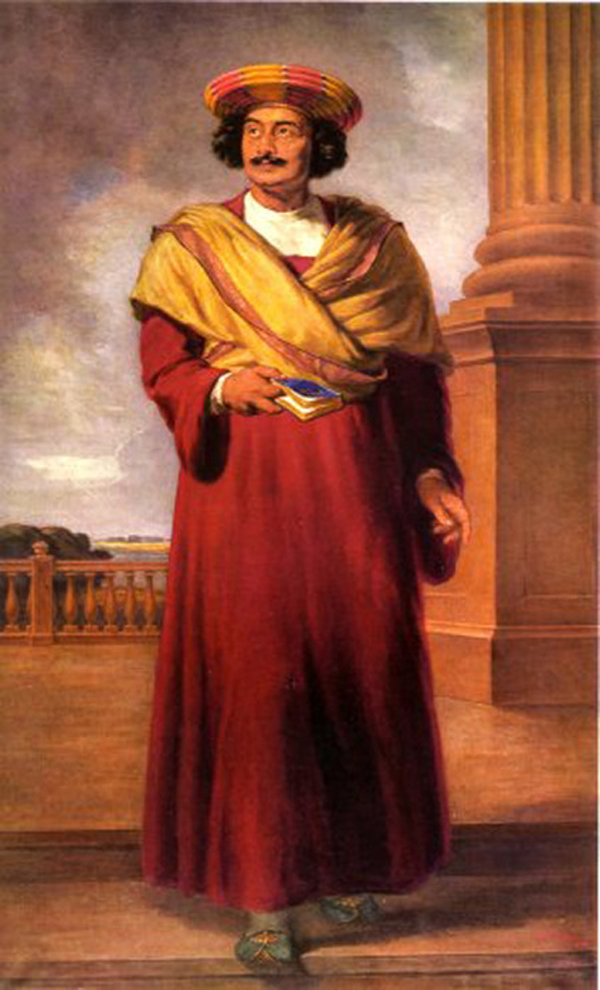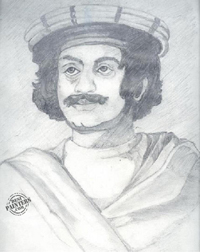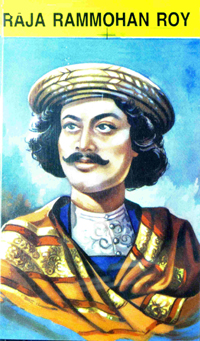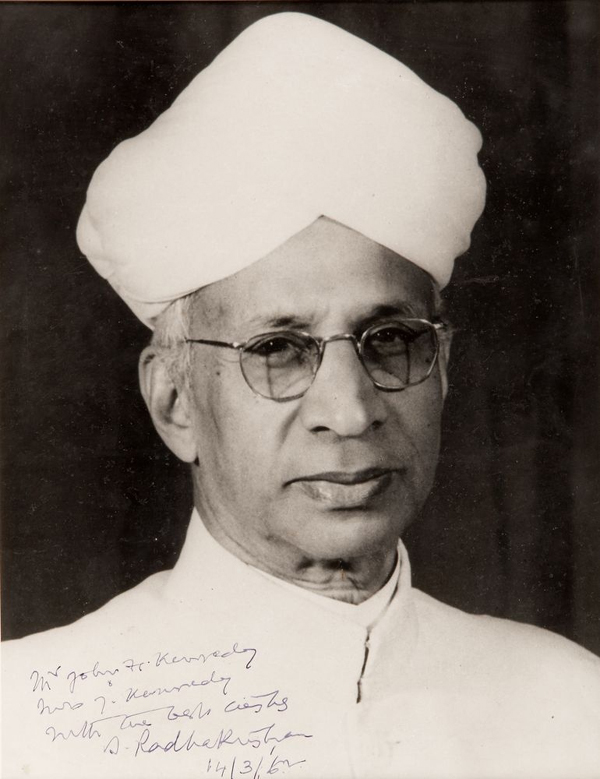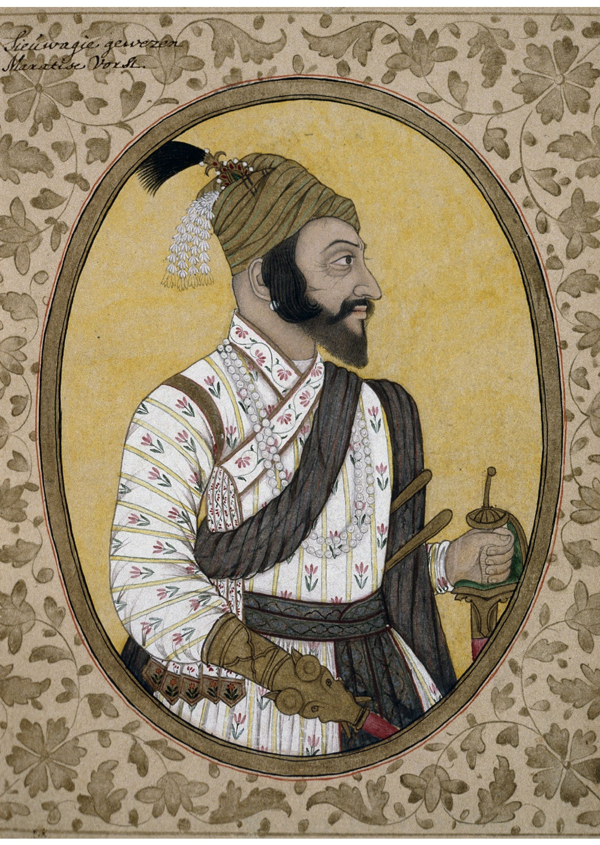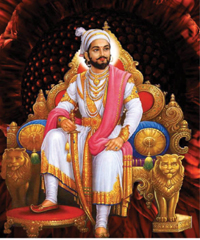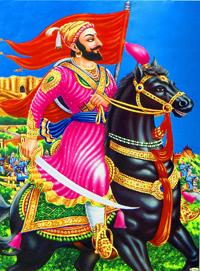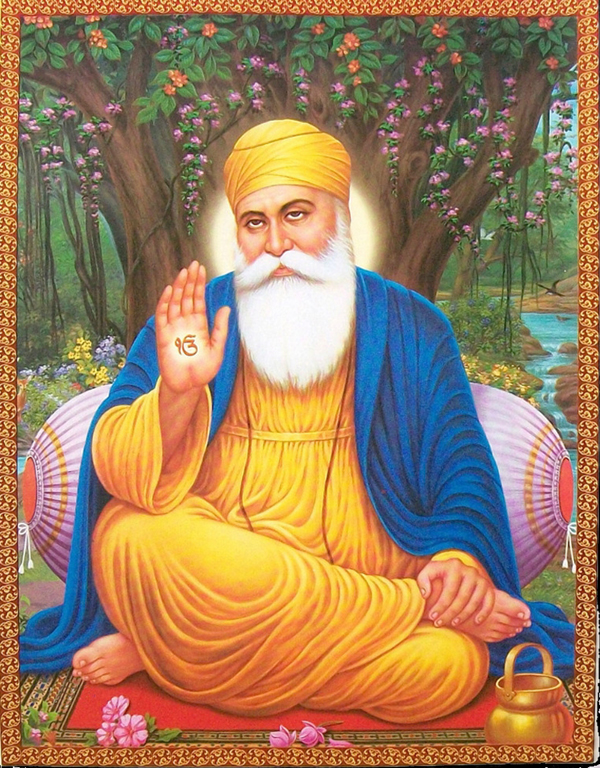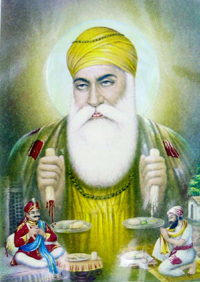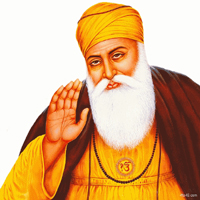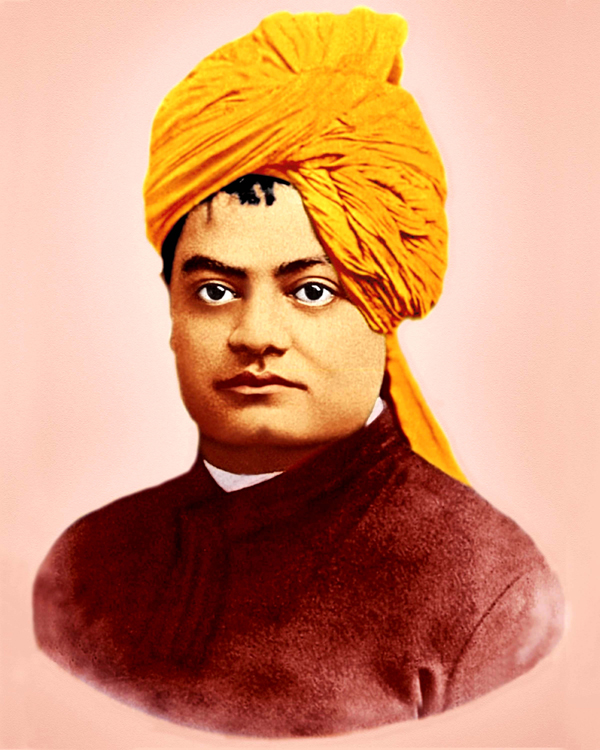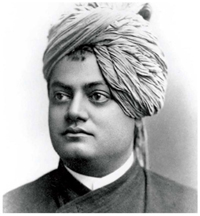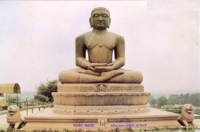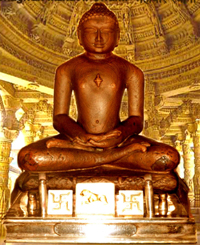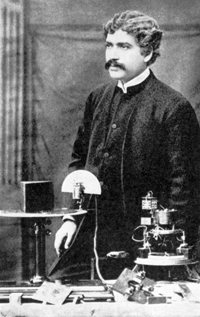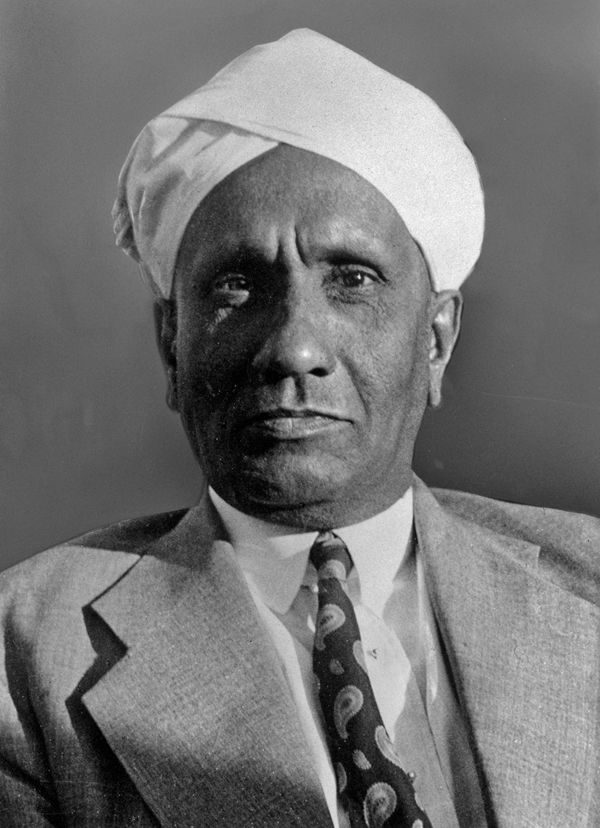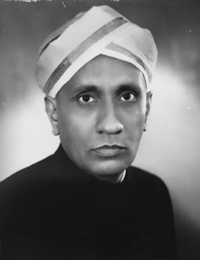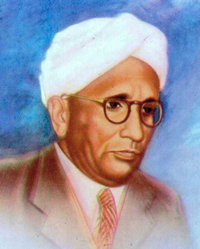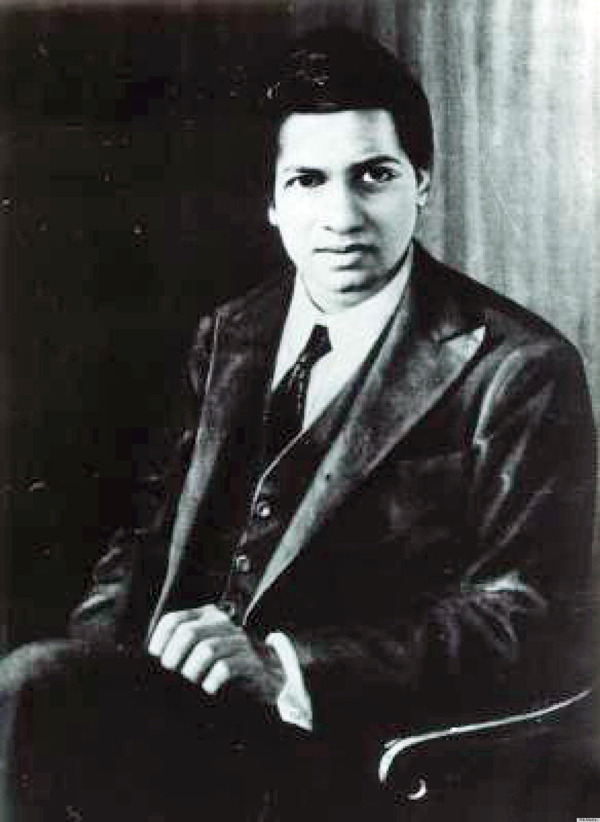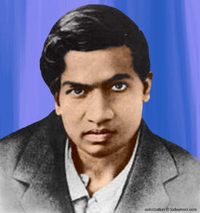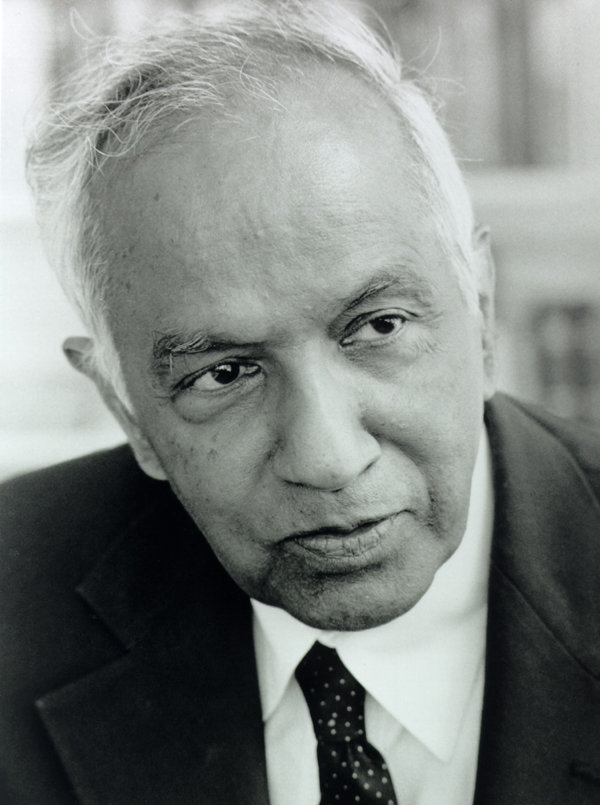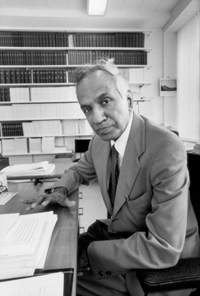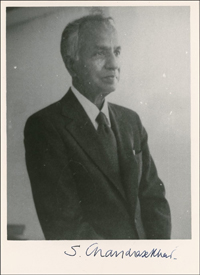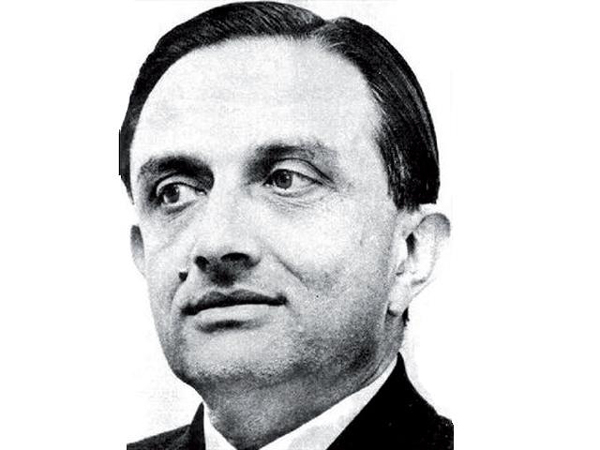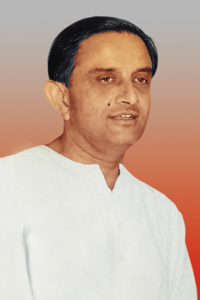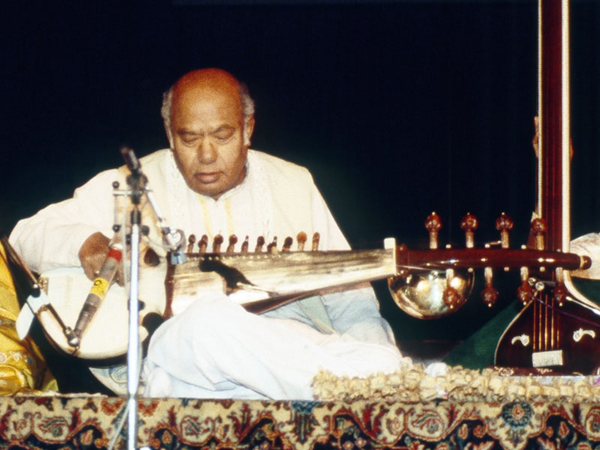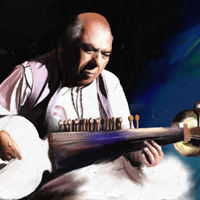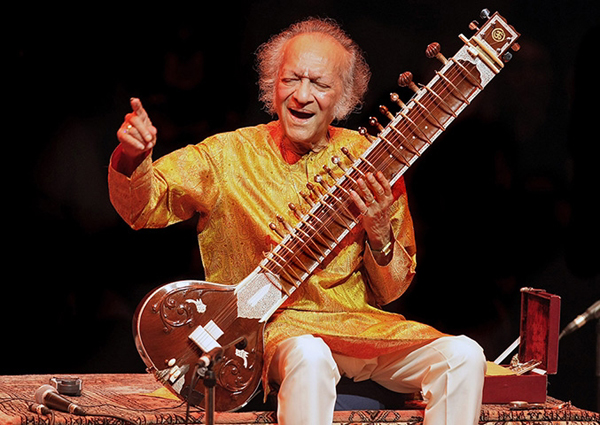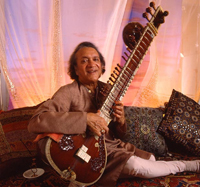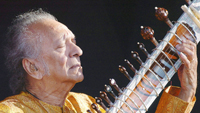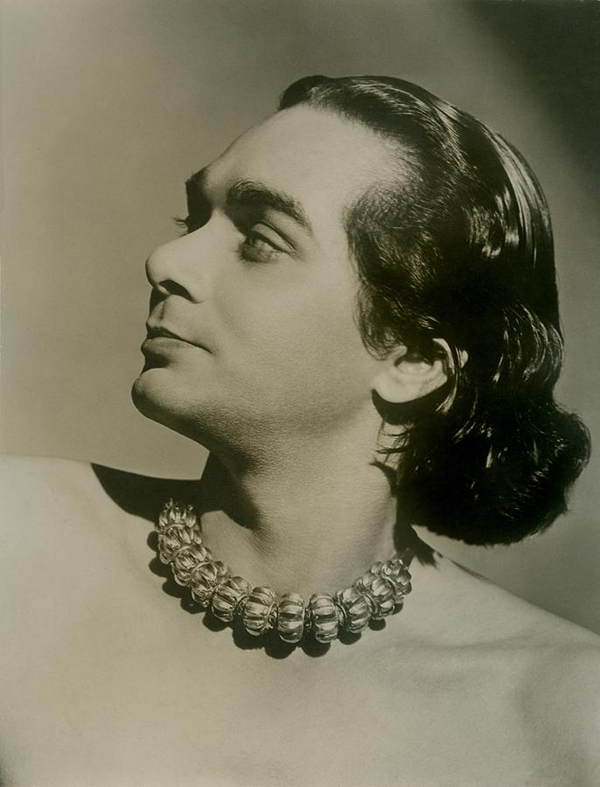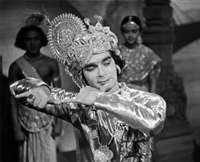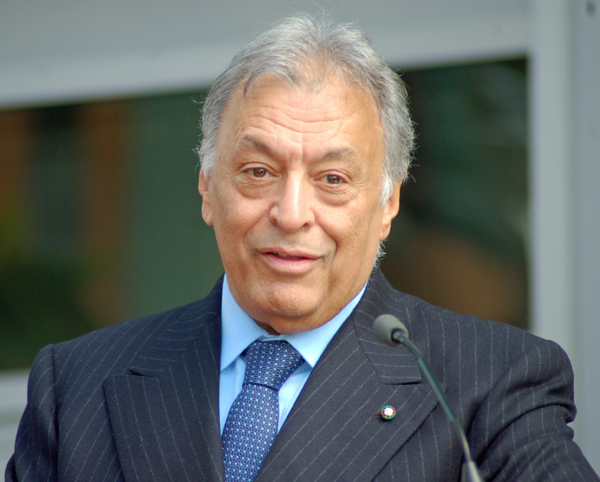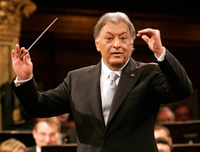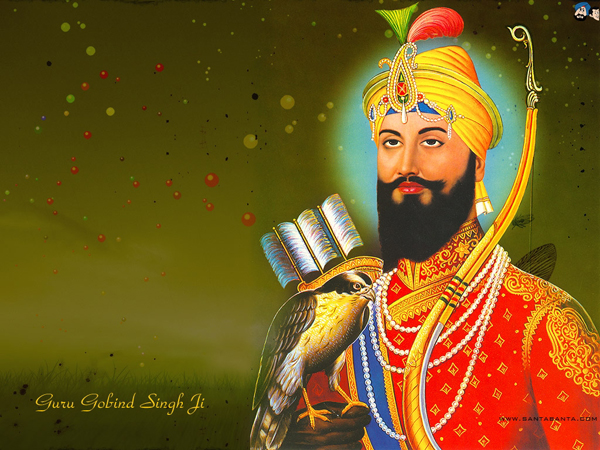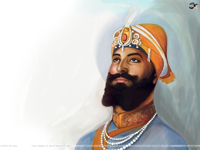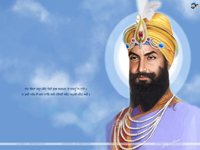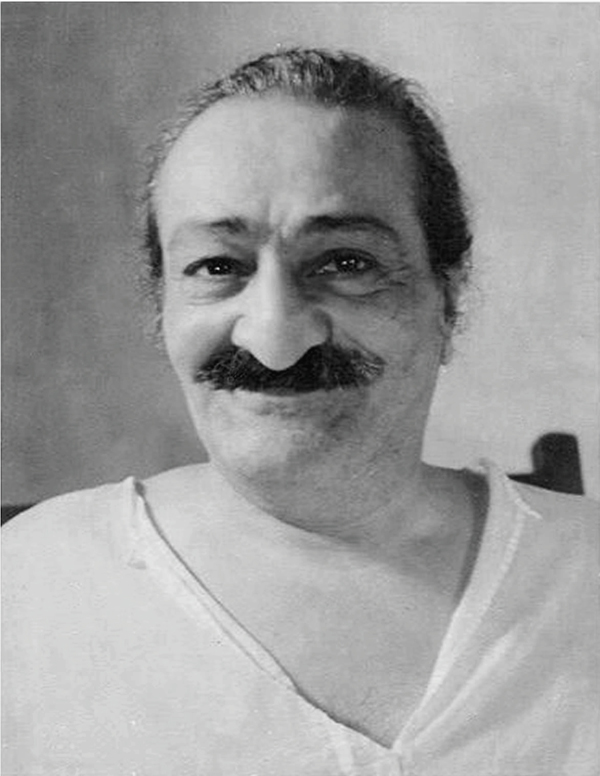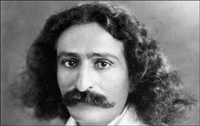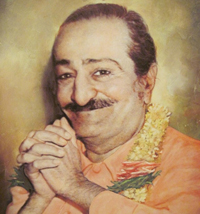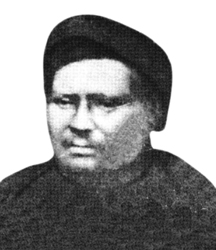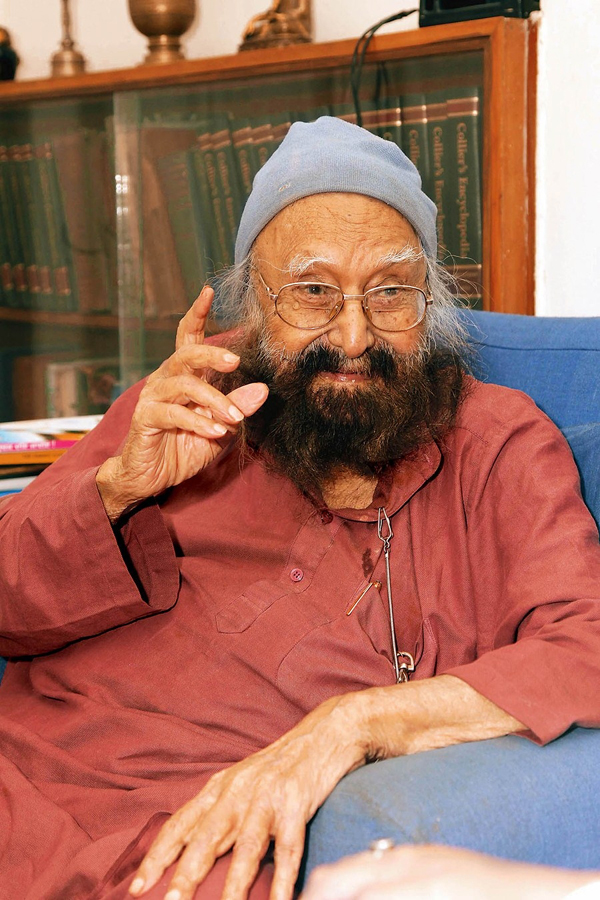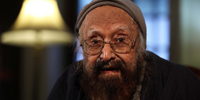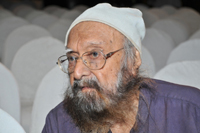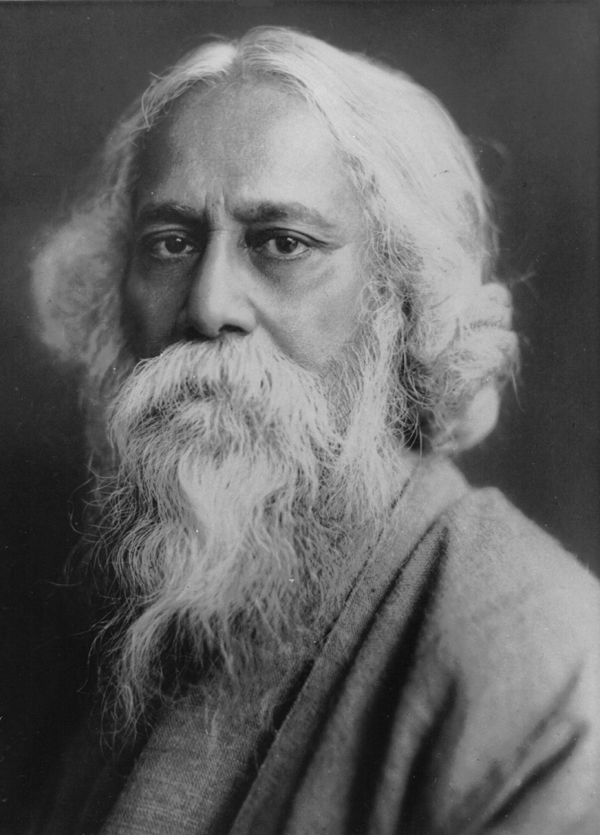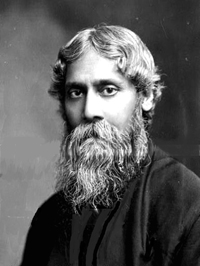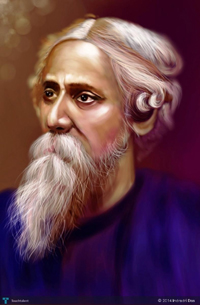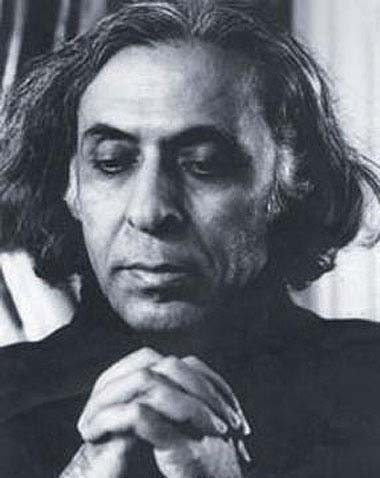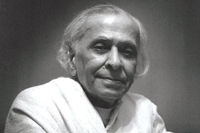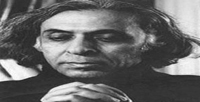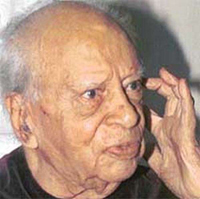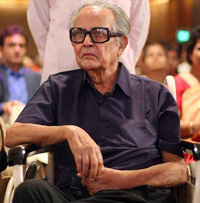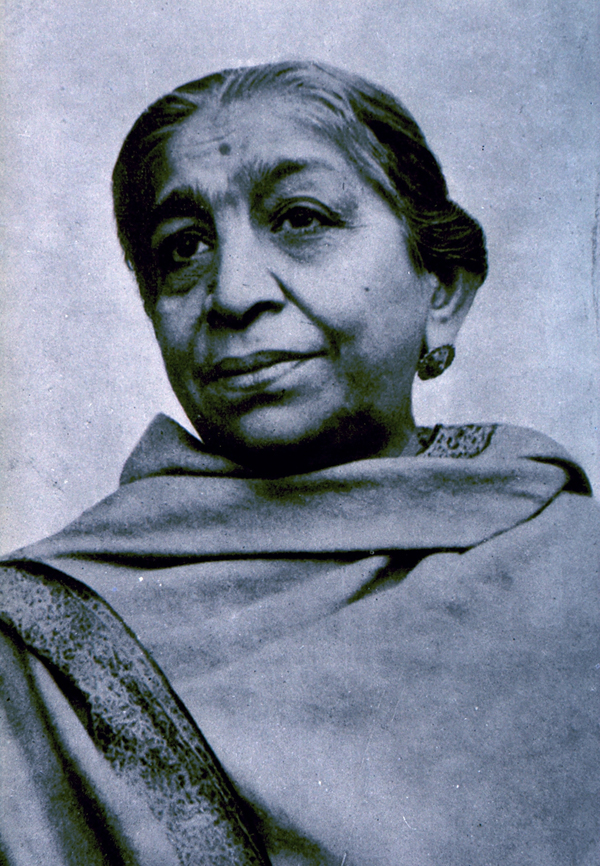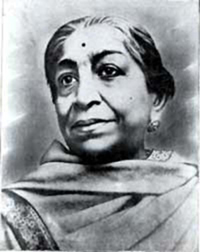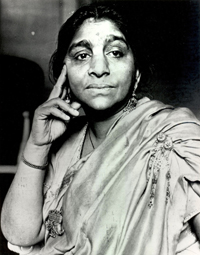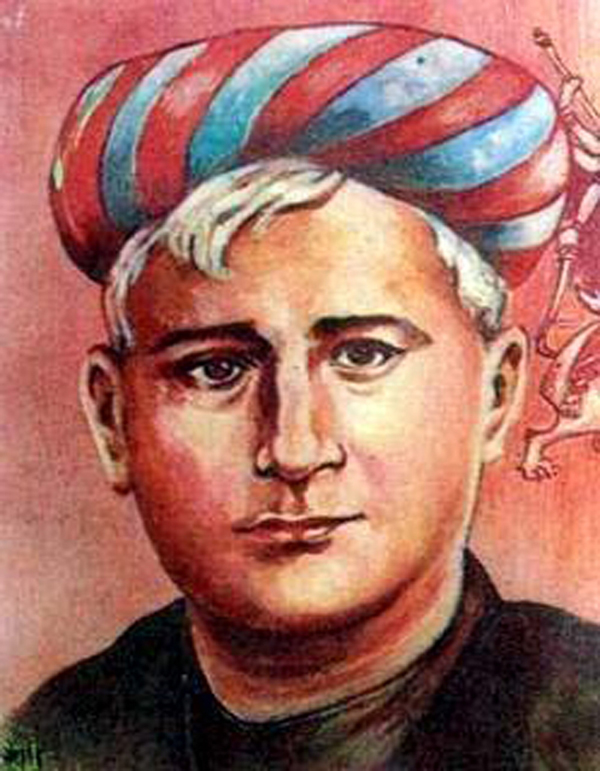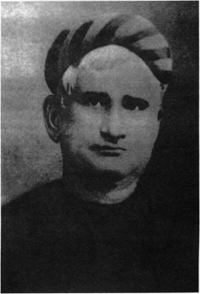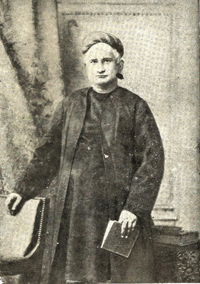History
Academics and Intellectuals
Pāṇini
Field of Interest: Sanskrit grammarian
Known For: Ashtadhyayi (lit. "Eight Chapters"), the earliest known treatise on descriptive linguistics, that defines Classical SanskritSanskrit grammarian Panini (5th?–4th? cents. BC ), wrote the first book on scientific linguistics.Pāṇini or Panini, was a Sanskrit grammarian from ancient India. He was born in Pushkalavati, Gandhara — on the outskirts of modern-day Charsadda — a city in the Khyber Pakhtunkhwa province of Pakistan. Pāṇini is known for his Sanskrit grammar, particularly for his formulation of the 3,996 rules of Sanskrit morphology, syntax and semantics in the grammar known as Ashtadhyayi (अष्टाध्यायीAṣṭādhyāyī, meaning "eight chapters"), the foundational text of the grammatical branch of the Vedanga, the auxiliary scholarly disciplines of Vedic religion (Hinduism). The Ashtadhyayi is one of the earliest known grammars of Sanskrit, although Pāṇini refers to previous texts like the Unadisutra, Dhatupatha, and Ganapatha. It is the earliest known work on descriptive linguistics, and together with the work of his immediate predecessors (Nirukta, Nighantu, Pratishakyas) stands at the beginning of the history of linguistics itself. His theory of morphological analysis was more advanced than any equivalent Western theory before the mid 20th century, and his analysis of noun compounds still forms the basis of modern linguistic theories of compounding, which have borrowed Sanskrit terms such as bahuvrihi and dvandva. Pāṇini's comprehensive and scientific theory of grammar is conventionally taken to mark the end of the period of Vedic Sanskrit, introducing the period of Classical Sanskrit.
Country: India
Date of Birth: ca. 4th century BC
Place of Birth: Gandhara
Date of Death: unknown
Known For: Ashtadhyayi (lit. "Eight Chapters"), the earliest known treatise on descriptive linguistics, that defines Classical SanskritSanskrit grammarian Panini (5th?–4th? cents. BC ), wrote the first book on scientific linguistics.Pāṇini or Panini, was a Sanskrit grammarian from ancient India. He was born in Pushkalavati, Gandhara — on the outskirts of modern-day Charsadda — a city in the Khyber Pakhtunkhwa province of Pakistan. Pāṇini is known for his Sanskrit grammar, particularly for his formulation of the 3,996 rules of Sanskrit morphology, syntax and semantics in the grammar known as Ashtadhyayi (अष्टाध्यायीAṣṭādhyāyī, meaning "eight chapters"), the foundational text of the grammatical branch of the Vedanga, the auxiliary scholarly disciplines of Vedic religion (Hinduism). The Ashtadhyayi is one of the earliest known grammars of Sanskrit, although Pāṇini refers to previous texts like the Unadisutra, Dhatupatha, and Ganapatha. It is the earliest known work on descriptive linguistics, and together with the work of his immediate predecessors (Nirukta, Nighantu, Pratishakyas) stands at the beginning of the history of linguistics itself. His theory of morphological analysis was more advanced than any equivalent Western theory before the mid 20th century, and his analysis of noun compounds still forms the basis of modern linguistic theories of compounding, which have borrowed Sanskrit terms such as bahuvrihi and dvandva. Pāṇini's comprehensive and scientific theory of grammar is conventionally taken to mark the end of the period of Vedic Sanskrit, introducing the period of Classical Sanskrit.
Country: India
Date of Birth: ca. 4th century BC
Place of Birth: Gandhara
Date of Death: unknown
Activists and Revolutionaries
Mohandas Karamchand Gandhi
Field of Interest: Independence leader
Known For: Leadership of Indian independence movement, philosophy of Satyagraha, Ahimsa or nonviolence, PacifismIn modern times no Indian so completely captured the Indian masses and had such a deep spiritual effect on so many throughout the world as Mohandas Karamchand Gandhi (1869–1948). Reverently referred to by millions of Indians as the Mahatma ("the great-souled one"), Gandhi is considered the greatest Indian since the Buddha. His unifying ability and his unusual methods of nonviolent resistance contributed materially to the liberation of India in 1947.Mohandas Karamchand Gandhi was the preeminent leader of Indian independence movement in British-ruled India. Employing nonviolent civil disobedience, Gandhi led India to independence and inspired movements for civil rights and freedom across the world. The honorific Mahatma (Sanskrit: "high-souled", "venerable")—applied to him first in 1914 in South Africa,—is now used worldwide. He is also called Bapu (Gujarati: endearment for "father", "papa") in India. Born and raised in a Hindu merchant caste family in coastal Gujarat, western India, and trained in law at the Inner Temple, London, Gandhi first employed nonviolent civil disobedience as an expatriate lawyer in South Africa, in the resident Indian community's struggle for civil rights. After his return to India in 1915, he set about organising peasants, farmers, and urban labourers to protest against excessive land-tax and discrimination. Assuming leadership of the Indian National Congress in 1921, Gandhi led nationwide campaigns for easing poverty, expanding women's rights, building religious and ethnic amity, ending untouchability, but above all for achieving Swaraj or self-rule. Gandhi famously led Indians in challenging the British-imposed salt tax with the 400 km (250 mi) Dandi Salt March in 1930, and later in calling for the British to Quit India in 1942. He was imprisoned for many years, upon many occasions, in both South Africa and India. Gandhi attempted to practise nonviolence and truth in all situations, and advocated that others do the same. He lived modestly in a self-sufficient residential community and wore the traditional Indian dhoti and shawl, woven with yarn hand spun on a charkha. He ate simple vegetarian food, and also undertook long fasts as a means to both self-purification and social protest. Gandhi's vision of a free India based on religious pluralism, however, was challenged in the early 1940s by a new Muslim nationalism which was demanding a separate Muslim homeland carved out of India. Eventually, in August 1947, Britain granted independence, but the British Indian Empire was partitioned into two dominions, a Hindu-majority India and Muslim Pakistan. As many displaced Hindus, Muslims, and Sikhs made their way to their new lands, religious violence broke out, especially in the Punjab and Bengal. Eschewing the official celebration of independence in Delhi, Gandhi visited the affected areas, attempting to provide solace. In the months following, he undertook several fasts unto death to promote religious harmony. The last of these, undertaken on 12 January 1948 at age 78, also had the indirect goal of pressuring India to pay out some cash assets owed to Pakistan. Some Indians thought Gandhi was too accommodating. Nathuram Godse, a Hindu nationalist, assassinated Gandhi on 30 January 1948 by firing three bullets into his chest at point-blank range. Indians widely describe Gandhi as the father of the nation. His birthday, 2 October, is commemorated as Gandhi Jayanti, a national holiday, and world-wide as the International Day of Nonviolence.
Country: India
Date of Birth: 2 October 1869
Place of Birth: Porbandar, Kathiawar Agency, British India
Date of Death: 30 January 1948
Please of Death: New Delhi, Delhi, India
Spouse: Kasturba Gandhi
Known For: Leadership of Indian independence movement, philosophy of Satyagraha, Ahimsa or nonviolence, PacifismIn modern times no Indian so completely captured the Indian masses and had such a deep spiritual effect on so many throughout the world as Mohandas Karamchand Gandhi (1869–1948). Reverently referred to by millions of Indians as the Mahatma ("the great-souled one"), Gandhi is considered the greatest Indian since the Buddha. His unifying ability and his unusual methods of nonviolent resistance contributed materially to the liberation of India in 1947.Mohandas Karamchand Gandhi was the preeminent leader of Indian independence movement in British-ruled India. Employing nonviolent civil disobedience, Gandhi led India to independence and inspired movements for civil rights and freedom across the world. The honorific Mahatma (Sanskrit: "high-souled", "venerable")—applied to him first in 1914 in South Africa,—is now used worldwide. He is also called Bapu (Gujarati: endearment for "father", "papa") in India. Born and raised in a Hindu merchant caste family in coastal Gujarat, western India, and trained in law at the Inner Temple, London, Gandhi first employed nonviolent civil disobedience as an expatriate lawyer in South Africa, in the resident Indian community's struggle for civil rights. After his return to India in 1915, he set about organising peasants, farmers, and urban labourers to protest against excessive land-tax and discrimination. Assuming leadership of the Indian National Congress in 1921, Gandhi led nationwide campaigns for easing poverty, expanding women's rights, building religious and ethnic amity, ending untouchability, but above all for achieving Swaraj or self-rule. Gandhi famously led Indians in challenging the British-imposed salt tax with the 400 km (250 mi) Dandi Salt March in 1930, and later in calling for the British to Quit India in 1942. He was imprisoned for many years, upon many occasions, in both South Africa and India. Gandhi attempted to practise nonviolence and truth in all situations, and advocated that others do the same. He lived modestly in a self-sufficient residential community and wore the traditional Indian dhoti and shawl, woven with yarn hand spun on a charkha. He ate simple vegetarian food, and also undertook long fasts as a means to both self-purification and social protest. Gandhi's vision of a free India based on religious pluralism, however, was challenged in the early 1940s by a new Muslim nationalism which was demanding a separate Muslim homeland carved out of India. Eventually, in August 1947, Britain granted independence, but the British Indian Empire was partitioned into two dominions, a Hindu-majority India and Muslim Pakistan. As many displaced Hindus, Muslims, and Sikhs made their way to their new lands, religious violence broke out, especially in the Punjab and Bengal. Eschewing the official celebration of independence in Delhi, Gandhi visited the affected areas, attempting to provide solace. In the months following, he undertook several fasts unto death to promote religious harmony. The last of these, undertaken on 12 January 1948 at age 78, also had the indirect goal of pressuring India to pay out some cash assets owed to Pakistan. Some Indians thought Gandhi was too accommodating. Nathuram Godse, a Hindu nationalist, assassinated Gandhi on 30 January 1948 by firing three bullets into his chest at point-blank range. Indians widely describe Gandhi as the father of the nation. His birthday, 2 October, is commemorated as Gandhi Jayanti, a national holiday, and world-wide as the International Day of Nonviolence.
Country: India
Date of Birth: 2 October 1869
Place of Birth: Porbandar, Kathiawar Agency, British India
Date of Death: 30 January 1948
Please of Death: New Delhi, Delhi, India
Spouse: Kasturba Gandhi
Teresa of Calcutta
Field of Interest: Social worker, Missionary
Known For: Working with the poorMother Teresa (Agnes Gonxha Bojaxhiu, 1910–97, in what is now Yugoslavia) won the Nobel Peace Prize in 1979 for her 30 years of work among Calcutta's poor.Blessed Teresa of Calcutta, MC, commonly known as Mother Teresa was a Roman Catholic religious sister and missionary who lived most of her life in India. She was born in today's Macedonia, with her family being of Albanian descent originating in Kosovo. Mother Teresa founded the Missionaries of Charity, a Roman Catholic religious congregation, which in 2012 consisted of over 4,500 sisters and is active in 133 countries. They run hospices and homes for people with HIV/AIDS, leprosy and tuberculosis; soup kitchens; dispensaries and mobile clinics; children's and family counselling programmes; orphanages; and schools. Members must adhere to the vows of chastity, poverty and obedience as well as a fourth vow, to give "wholehearted free service to the poorest of the poor". Mother Teresa was the recipient of numerous honours including the 1979 Nobel Peace Prize. In 2003, she was beatified as "Blessed Teresa of Calcutta". A second miracle credited to her intercession is required before she can be recognised as a saint by the Catholic Church. A controversial figure both during her life and after her death, Mother Teresa was widely admired by many for her charitable works, but also widely criticised, particularly for her efforts opposing contraception and for substandard conditions in the hospices for which she was responsible.
Country: India
Date of Birth: 26 August 1910
Place of Birth: Üsküp, Kosovo Vilayet, Ottoman Empire (modern Skopje, Macedonia)
Date of Death: 5 September 1997
Please of Death: Calcutta, West Bengal, India
Known For: Working with the poorMother Teresa (Agnes Gonxha Bojaxhiu, 1910–97, in what is now Yugoslavia) won the Nobel Peace Prize in 1979 for her 30 years of work among Calcutta's poor.Blessed Teresa of Calcutta, MC, commonly known as Mother Teresa was a Roman Catholic religious sister and missionary who lived most of her life in India. She was born in today's Macedonia, with her family being of Albanian descent originating in Kosovo. Mother Teresa founded the Missionaries of Charity, a Roman Catholic religious congregation, which in 2012 consisted of over 4,500 sisters and is active in 133 countries. They run hospices and homes for people with HIV/AIDS, leprosy and tuberculosis; soup kitchens; dispensaries and mobile clinics; children's and family counselling programmes; orphanages; and schools. Members must adhere to the vows of chastity, poverty and obedience as well as a fourth vow, to give "wholehearted free service to the poorest of the poor". Mother Teresa was the recipient of numerous honours including the 1979 Nobel Peace Prize. In 2003, she was beatified as "Blessed Teresa of Calcutta". A second miracle credited to her intercession is required before she can be recognised as a saint by the Catholic Church. A controversial figure both during her life and after her death, Mother Teresa was widely admired by many for her charitable works, but also widely criticised, particularly for her efforts opposing contraception and for substandard conditions in the hospices for which she was responsible.
Country: India
Date of Birth: 26 August 1910
Place of Birth: Üsküp, Kosovo Vilayet, Ottoman Empire (modern Skopje, Macedonia)
Date of Death: 5 September 1997
Please of Death: Calcutta, West Bengal, India
Vinayak Narahari "Vinoba" Bhave
Field of Interest: Independence leader
Known For: Bhoodan MovementA leading disciple of the Mahatma, Vinayak ("Vinoba") Narahari Bhave (1895–1982), was an agrarian reformer who persuaded wealthy landowners to give about 600,000 hectares (1,500,000 acres) of tillable land to India's poor.Vinayak Narahari "Vinoba" Bhave was an Indian advocate of nonviolence and human rights. Often called Acharya (Sanskrit for teacher), he is best known for the Bhoodan Movement. He is considered as a National Teacher of India and the spiritual successor of Mohandas Gandhi.
Country: India
Date of Birth: 11 September 1895
Place of Birth: Gagode, Raigad district, India
Date of Death: 15 November 1982
Please of Death: Paunar, Wardha
Known For: Bhoodan MovementA leading disciple of the Mahatma, Vinayak ("Vinoba") Narahari Bhave (1895–1982), was an agrarian reformer who persuaded wealthy landowners to give about 600,000 hectares (1,500,000 acres) of tillable land to India's poor.Vinayak Narahari "Vinoba" Bhave was an Indian advocate of nonviolence and human rights. Often called Acharya (Sanskrit for teacher), he is best known for the Bhoodan Movement. He is considered as a National Teacher of India and the spiritual successor of Mohandas Gandhi.
Country: India
Date of Birth: 11 September 1895
Place of Birth: Gagode, Raigad district, India
Date of Death: 15 November 1982
Please of Death: Paunar, Wardha
Business Leaders
Jamsetji Nusserwanji Tata
Field of Interest: Industrialist
Known For: Founder of Tata GroupThe rising position of India in science and industry is well exemplified by Jamshedji Nusserwanji Tata (1822–1904), founder of the nation's first modern iron and steel works as well as many other key industries; the physicist Jagadis Chandra Bose (1858–1937), noted for his research in plant life; Srinivasa Ramanujan (1887–1919), an amazingly original, although largely self-taught, mathematician; Chandrasekhara Venkata Raman (1888–1970), who was awarded the 1930 Nobel Prize for research in physics; Chandrasekhara Subramanyan (1910–1995), also a Nobel Prize laureate in physics, and Vikram A. Sarabhai (1919–71), the founder of the Indian space program.Jamsetji Nusserwanji Tata was an Indian pioneer industrialist, who founded the Tata Group, India's biggest conglomerate company. He was born to a Parsi Zoroastrian family in Navsari then part of the princely state of Baroda. He founded what would later become the Tata Group of companies. Jamsetji Tata is regarded as the legendary "Father of Indian Industry". "When you have to give the lead in action, in ideas – a lead which does not fit in with the very climate of opinion – that is true courage, physical or mental or spiritual, call it what you like, and it is this type of courage and vision that Jamsetji Tata showed. It is right that we should honour his memory and remember him as one of the big founders of modern India."— Jawaharlal Nehru
Country: India
Date of Birth: 3 March 1839
Place of Birth: Navsari, Baroda, Bombay Presidency, British India
Date of Death: 19 May 1904
Please of Death: Bad Nauheim, German Empire
Spouse: Hirabai Daboo
Known For: Founder of Tata GroupThe rising position of India in science and industry is well exemplified by Jamshedji Nusserwanji Tata (1822–1904), founder of the nation's first modern iron and steel works as well as many other key industries; the physicist Jagadis Chandra Bose (1858–1937), noted for his research in plant life; Srinivasa Ramanujan (1887–1919), an amazingly original, although largely self-taught, mathematician; Chandrasekhara Venkata Raman (1888–1970), who was awarded the 1930 Nobel Prize for research in physics; Chandrasekhara Subramanyan (1910–1995), also a Nobel Prize laureate in physics, and Vikram A. Sarabhai (1919–71), the founder of the Indian space program.Jamsetji Nusserwanji Tata was an Indian pioneer industrialist, who founded the Tata Group, India's biggest conglomerate company. He was born to a Parsi Zoroastrian family in Navsari then part of the princely state of Baroda. He founded what would later become the Tata Group of companies. Jamsetji Tata is regarded as the legendary "Father of Indian Industry". "When you have to give the lead in action, in ideas – a lead which does not fit in with the very climate of opinion – that is true courage, physical or mental or spiritual, call it what you like, and it is this type of courage and vision that Jamsetji Tata showed. It is right that we should honour his memory and remember him as one of the big founders of modern India."— Jawaharlal Nehru
Country: India
Date of Birth: 3 March 1839
Place of Birth: Navsari, Baroda, Bombay Presidency, British India
Date of Death: 19 May 1904
Please of Death: Bad Nauheim, German Empire
Spouse: Hirabai Daboo
Movie, Film, TV, & Theater
Kālidāsa
Field of Interest: Playwright, poet
Known For: Abhijñānaśākuntalam, Raghuvaṃśa, Meghadūta, Vikramōrvaśīyam, KumārasambhavaA classical Sanskrit writer in Indian history was the poet and playwright Kalidasa (fl. 5th cent. AD ), whose best-known work is Shakuntala.Kālidāsa was a Classical Sanskrit writer, widely regarded as the greatest poet and dramatist in the Sanskrit language. His floruit cannot be dated with precision, but most likely falls within the 5th century AD. His plays and poetry are primarily based on the Hindu Puranas.
Country: India
Date of Birth: ca. 4th century AD
Place of Birth: Unknown
Date of Death: 5th century AD
Please of Death: Gupta Empire, possibly in Ujjain or Sri Lanka
Spouse: Said to have been married to a princess; her name was Vidyotama
Known For: Abhijñānaśākuntalam, Raghuvaṃśa, Meghadūta, Vikramōrvaśīyam, KumārasambhavaA classical Sanskrit writer in Indian history was the poet and playwright Kalidasa (fl. 5th cent. AD ), whose best-known work is Shakuntala.Kālidāsa was a Classical Sanskrit writer, widely regarded as the greatest poet and dramatist in the Sanskrit language. His floruit cannot be dated with precision, but most likely falls within the 5th century AD. His plays and poetry are primarily based on the Hindu Puranas.
Country: India
Date of Birth: ca. 4th century AD
Place of Birth: Unknown
Date of Death: 5th century AD
Please of Death: Gupta Empire, possibly in Ujjain or Sri Lanka
Spouse: Said to have been married to a princess; her name was Vidyotama
Satyajit Ray
Field of Interest: Film Director, Producer, Screenwriter
Known For: Pather Panchali (1955), Aparajito (1956), Apur Sansar (1959)Preeminent in the Indian cinema is the director Satyajit Ray (1921–1992).Satyajit Ray was an Indian filmmaker. He is considered as one of the greatest filmmakers of the 20th century. Ray was born in the city of Calcutta into a Bengali family prominent in the world of arts and literature. Starting his career as a commercial artist, Ray was drawn into independent filmmaking after meeting French filmmaker Jean Renoir and viewing Vittorio De Sica's Italian neorealist 1948 film Bicycle Thieves during a visit to London. Ray directed 36 films, including feature films, documentaries and shorts. He was also a fiction writer, publisher, illustrator, calligrapher, music composer, graphic designer and film critic. He authored several short stories and novels, primarily aimed at children and adolescents. Feluda, the sleuth, and Professor Shonku, the scientist in his science fiction stories, are popular fictional characters created by him. He was awarded an honorary degree by Oxford University. Ray's first film, Pather Panchali (1955), won eleven international prizes, including the Best Human Document at the 1956 Cannes Film Festival. This film, along with Aparajito (1956), and Apur Sansar (1959) form The Apu Trilogy. Ray did the scripting, casting, scoring, and editing, and designed his own credit titles and publicity material. Ray received many major awards in his career, including 32 Indian National Film Awards, a number of awards at international film festivals and award ceremonies, and an honorary Academy Award in 1992. The Government of India honoured him with the Bharat Ratna in 1992.
Country: India
Date of Birth: 2 May 1921
Place of Birth: Calcutta, Bengal Presidency, British India
Date of Death: 23 April 1992
Please of Death: Kolkata, West Bengal
Spouse: Bijoya Ray (m. 1949–92)
Known For: Pather Panchali (1955), Aparajito (1956), Apur Sansar (1959)Preeminent in the Indian cinema is the director Satyajit Ray (1921–1992).Satyajit Ray was an Indian filmmaker. He is considered as one of the greatest filmmakers of the 20th century. Ray was born in the city of Calcutta into a Bengali family prominent in the world of arts and literature. Starting his career as a commercial artist, Ray was drawn into independent filmmaking after meeting French filmmaker Jean Renoir and viewing Vittorio De Sica's Italian neorealist 1948 film Bicycle Thieves during a visit to London. Ray directed 36 films, including feature films, documentaries and shorts. He was also a fiction writer, publisher, illustrator, calligrapher, music composer, graphic designer and film critic. He authored several short stories and novels, primarily aimed at children and adolescents. Feluda, the sleuth, and Professor Shonku, the scientist in his science fiction stories, are popular fictional characters created by him. He was awarded an honorary degree by Oxford University. Ray's first film, Pather Panchali (1955), won eleven international prizes, including the Best Human Document at the 1956 Cannes Film Festival. This film, along with Aparajito (1956), and Apur Sansar (1959) form The Apu Trilogy. Ray did the scripting, casting, scoring, and editing, and designed his own credit titles and publicity material. Ray received many major awards in his career, including 32 Indian National Film Awards, a number of awards at international film festivals and award ceremonies, and an honorary Academy Award in 1992. The Government of India honoured him with the Bharat Ratna in 1992.
Country: India
Date of Birth: 2 May 1921
Place of Birth: Calcutta, Bengal Presidency, British India
Date of Death: 23 April 1992
Please of Death: Kolkata, West Bengal
Spouse: Bijoya Ray (m. 1949–92)
Tanjore Balasaraswati
Field of Interest: Bharatanatyam dancer
Known For: Her rendering of Bharatanatyam, a classical dance style originated in the South Indian state of Tamil Nadu, made this style of dancing well known in different parts of India and many parts of the worldTanjore Balasaraswati (1919?–84) won renown as a classical dancer and teacher.Tanjore Balasaraswati, also known as Balasaraswati was a celebrated Indian dancer, and her rendering of Bharatanatyam, a classical dance style originated in the South Indian state of Tamil Nadu, made this style of dancing well known in different parts of India and many parts of the world. She was awarded the second highest civilian honour given by the Government of India, the Padma Vibhushan, in 1977. In 1981 she was awarded the Sangeetha Kalasikhamani award of The Indian Fine Arts Society, Chennai.
Country: India
Date of Birth: 13 May 1918
Place of Birth: Madras, British India
Date of Death: 9 February 1984
Please of Death: Madras, India
Known For: Her rendering of Bharatanatyam, a classical dance style originated in the South Indian state of Tamil Nadu, made this style of dancing well known in different parts of India and many parts of the worldTanjore Balasaraswati (1919?–84) won renown as a classical dancer and teacher.Tanjore Balasaraswati, also known as Balasaraswati was a celebrated Indian dancer, and her rendering of Bharatanatyam, a classical dance style originated in the South Indian state of Tamil Nadu, made this style of dancing well known in different parts of India and many parts of the world. She was awarded the second highest civilian honour given by the Government of India, the Padma Vibhushan, in 1977. In 1981 she was awarded the Sangeetha Kalasikhamani award of The Indian Fine Arts Society, Chennai.
Country: India
Date of Birth: 13 May 1918
Place of Birth: Madras, British India
Date of Death: 9 February 1984
Please of Death: Madras, India
Political Leaders
A'la Azad Abul Muzaffar Shahab ud-Din Mohammad Khurram
Field of Interest: Ruler
Known For: 5th Mughal Emperor, Mughal architecture (Taj Mahal at Agra)Akbar (1542–1605) greatly expanded the Mughal Empire, which reached its height under Shah Jahan (1592–1666), builder of the Taj Mahal, and his son, the fanatical emperor Aurangzeb (1618–1707).Shahabuddin Muhammad Shah Jahan was the fifth Mughal Emperor of India. He is also known as Shah Jahan I. He ruled from 1628 until 1658. Born Prince Khurram, he was the son of Emperor Jahangir and his Hindu Rajput wife, Taj Bibi Bilqis Makani (13 May 1573 – 18 April 1619) He was chosen as successor to the throne after the death of his father in 1627. He was considered one of the greatest Mughals. His rule has been called the Golden Age and one of the most prosperous ages of Indian civilization. Like Akbar, he was eager to expand his vast empire. In 1658, he fell ill and was confined by his son and successor Aurangzeb in Agra Fort until his death in 1666. Shah Jahan was a more Orthodox Muslim than his father and grandfather. His policies towards non-Muslims were less liberal than Jahangir and Akbar. The period of his reign was considered the golden age of Mughal architecture. Shah Jahan erected many monuments, the most famous of which is the Taj Mahal at Agra, built in 1632–1654 as a tomb for his beloved wife Mumtaz Mahal.
Country: India
Date of Birth: 5 January 1592
Place of Birth: Lahore, Mughal Empire (now in Pakistan)
Date of Death: 22 January 1666
Please of Death: Agra Fort, Agra Mughal Empire, (now in India)
Spouse: Kandahari Begum Mumtaz Mahal Izz un-Nisa Begum
Known For: 5th Mughal Emperor, Mughal architecture (Taj Mahal at Agra)Akbar (1542–1605) greatly expanded the Mughal Empire, which reached its height under Shah Jahan (1592–1666), builder of the Taj Mahal, and his son, the fanatical emperor Aurangzeb (1618–1707).Shahabuddin Muhammad Shah Jahan was the fifth Mughal Emperor of India. He is also known as Shah Jahan I. He ruled from 1628 until 1658. Born Prince Khurram, he was the son of Emperor Jahangir and his Hindu Rajput wife, Taj Bibi Bilqis Makani (13 May 1573 – 18 April 1619) He was chosen as successor to the throne after the death of his father in 1627. He was considered one of the greatest Mughals. His rule has been called the Golden Age and one of the most prosperous ages of Indian civilization. Like Akbar, he was eager to expand his vast empire. In 1658, he fell ill and was confined by his son and successor Aurangzeb in Agra Fort until his death in 1666. Shah Jahan was a more Orthodox Muslim than his father and grandfather. His policies towards non-Muslims were less liberal than Jahangir and Akbar. The period of his reign was considered the golden age of Mughal architecture. Shah Jahan erected many monuments, the most famous of which is the Taj Mahal at Agra, built in 1632–1654 as a tomb for his beloved wife Mumtaz Mahal.
Country: India
Date of Birth: 5 January 1592
Place of Birth: Lahore, Mughal Empire (now in Pakistan)
Date of Death: 22 January 1666
Please of Death: Agra Fort, Agra Mughal Empire, (now in India)
Spouse: Kandahari Begum Mumtaz Mahal Izz un-Nisa Begum
Abu'l-Fath Jalal ud-din Muhammad Akbar
Field of Interest: Ruler
Known For: 3rd Mughal EmperorAkbar (1542–1605) greatly expanded the Mughal Empire, which reached its height under Shah Jahan (1592–1666), builder of the Taj Mahal, and his son, the fanatical emperor Aurangzeb (1618–1707).Abu'l-Fath Jalal ud-din Muhammad Akbar, known popularly as Akbar, also known as Akbar the Great or Akbar I, was Mughal Emperor from 1556 until his death. He was the third and one of the greatest rulers of the Mughal Dynasty in India. Akbar succeeded his father, Humayun, under a regent, Bairam Khan, who helped the young emperor expand and consolidate Mughal domains in India. A strong personality and a successful general, Akbar gradually enlarged the Mughal Empire to include nearly all of the Indian Subcontinent north of the Godavari river. His power and influence, however, extended over the entire country because of Mughal military, political, cultural, and economic dominance. To unify the vast Mughal state, Akbar established a centralised system of administration throughout his empire and adopted a policy of conciliating conquered rulers through marriage and diplomacy. In order to preserve peace and order in a religiously and culturally diverse empire, he adopted policies that won him the support of his non-Muslim subjects. Eschewing tribal bonds and Islamic state identity, Akbar strived to unite far-flung lands of his realm through loyalty, expressed through a Persianised culture, to himself as an emperor who had near-divine status.
Country: India
Date of Birth: 15 October 1542
Place of Birth: Rajput Fortress of Umerkot in Sindh (in modern day Pakistan)
Date of Death: 27 October 1605
Please of Death: Fatehpur Sikri, Agra
Spouse: Mariam-uz-Zamani Begum(Jodha Bai) Ruqaiya Sultan Begum Salima Sultan Begum Khandeshi Begum Begum Raj Kanwari Bai Begum Nathi Bai Qismiyah Banu Begum Kashmiri Begum Qazwini Begum Mughli Begum one wives unnamed concubines: Salima Sultana Bibi Daulat Shad Bibi one another concubine
Known For: 3rd Mughal EmperorAkbar (1542–1605) greatly expanded the Mughal Empire, which reached its height under Shah Jahan (1592–1666), builder of the Taj Mahal, and his son, the fanatical emperor Aurangzeb (1618–1707).Abu'l-Fath Jalal ud-din Muhammad Akbar, known popularly as Akbar, also known as Akbar the Great or Akbar I, was Mughal Emperor from 1556 until his death. He was the third and one of the greatest rulers of the Mughal Dynasty in India. Akbar succeeded his father, Humayun, under a regent, Bairam Khan, who helped the young emperor expand and consolidate Mughal domains in India. A strong personality and a successful general, Akbar gradually enlarged the Mughal Empire to include nearly all of the Indian Subcontinent north of the Godavari river. His power and influence, however, extended over the entire country because of Mughal military, political, cultural, and economic dominance. To unify the vast Mughal state, Akbar established a centralised system of administration throughout his empire and adopted a policy of conciliating conquered rulers through marriage and diplomacy. In order to preserve peace and order in a religiously and culturally diverse empire, he adopted policies that won him the support of his non-Muslim subjects. Eschewing tribal bonds and Islamic state identity, Akbar strived to unite far-flung lands of his realm through loyalty, expressed through a Persianised culture, to himself as an emperor who had near-divine status.
Country: India
Date of Birth: 15 October 1542
Place of Birth: Rajput Fortress of Umerkot in Sindh (in modern day Pakistan)
Date of Death: 27 October 1605
Please of Death: Fatehpur Sikri, Agra
Spouse: Mariam-uz-Zamani Begum(Jodha Bai) Ruqaiya Sultan Begum Salima Sultan Begum Khandeshi Begum Begum Raj Kanwari Bai Begum Nathi Bai Qismiyah Banu Begum Kashmiri Begum Qazwini Begum Mughli Begum one wives unnamed concubines: Salima Sultana Bibi Daulat Shad Bibi one another concubine
Abul Muzaffar Muhi-ud-Din Mohammad Aurangzeb
Field of Interest: Ruler
Known For: 6th Mughal EmperorAkbar (1542–1605) greatly expanded the Mughal Empire, which reached its height under Shah Jahan (1592–1666), builder of the Taj Mahal, and his son, the fanatical emperor Aurangzeb (1618–1707).Abul Muzaffar Muhi-ud-Din Muhammad Aurangzeb commonly known as Aurangzeb Alamgir and by his imperial title Alamgir ("world-seizer" or "universe-seizer"), was the sixth Mughal Emperor and ruled over most of the Indian subcontinent. His reign lasted for 49 years from 1658 until his death in 1707. Aurangzeb was a notable expansionist and during his reign, the Mughal Empire reached its greatest extent. During his lifetime, victories in the south expanded the Mughal Empire to more than 3.2 million square kilometres and he ruled over a population estimated as being in the range of 100–150 million subjects, with an annual yearly tribute of £38,624,680 in 1690 (the highest in the world at that time). Aurangzeb's policies partly abandoned the legacy of pluralism, which remains a very controversial aspect of his reign. Rebellions and wars led to the exhaustion of the imperial Mughal treasury and army. He was a strong and effective ruler, but following his death the expansionary period of the Mughal Empire came to an end, and centralized control of the empire declined rapidly.
Country: India
Date of Birth: 14 October 1618
Place of Birth: Dahod, Mughal Empire
Date of Death: 20 February 1707
Please of Death: Ahmednagar, Mughal Empire
Spouse: Begum Nawab Bai Aurangabadi Mahal Udaipuri Mahal Zainabadi Mahal
Known For: 6th Mughal EmperorAkbar (1542–1605) greatly expanded the Mughal Empire, which reached its height under Shah Jahan (1592–1666), builder of the Taj Mahal, and his son, the fanatical emperor Aurangzeb (1618–1707).Abul Muzaffar Muhi-ud-Din Muhammad Aurangzeb commonly known as Aurangzeb Alamgir and by his imperial title Alamgir ("world-seizer" or "universe-seizer"), was the sixth Mughal Emperor and ruled over most of the Indian subcontinent. His reign lasted for 49 years from 1658 until his death in 1707. Aurangzeb was a notable expansionist and during his reign, the Mughal Empire reached its greatest extent. During his lifetime, victories in the south expanded the Mughal Empire to more than 3.2 million square kilometres and he ruled over a population estimated as being in the range of 100–150 million subjects, with an annual yearly tribute of £38,624,680 in 1690 (the highest in the world at that time). Aurangzeb's policies partly abandoned the legacy of pluralism, which remains a very controversial aspect of his reign. Rebellions and wars led to the exhaustion of the imperial Mughal treasury and army. He was a strong and effective ruler, but following his death the expansionary period of the Mughal Empire came to an end, and centralized control of the empire declined rapidly.
Country: India
Date of Birth: 14 October 1618
Place of Birth: Dahod, Mughal Empire
Date of Death: 20 February 1707
Please of Death: Ahmednagar, Mughal Empire
Spouse: Begum Nawab Bai Aurangabadi Mahal Udaipuri Mahal Zainabadi Mahal
Ashoka Maurya
Field of Interest: Ruler
Known For: Samraat Chakravartin (Emperor of Emperors Ashoka)Some of the noteworthy religious and political leaders were Chandragupta (r.321?–297? BC ), founder of the Maurya Dynasty; Asoka (r.273–232 BC ), who made Buddhism the religion of his empire; Chandragupta II (r. AD 375?–413), whose era marked a high point of Hindu art and literature; Shivaji (1627?–80), a hero of much Hindu folklore; Nanak (1469–1539), whose teachings are the basis of Sikhism; and Govind Singh (1666–1708), the guru who gave Sikhism its definitive form.Ashoka Maurya commonly known as Ashoka and also as Ashoka the Great, was an Indian emperor of the Maurya Dynasty who ruled almost all of the Indian subcontinent from circa 269 BCE to 232 BCE. One of India's greatest emperors, Ashoka reigned over a realm that stretched from the Hindu Kush mountains in the west to Bengal in the East and covered the entire Indian subcontinent except parts of present day Tamil Nadu and Kerala. The empire's capital was Pataliputra (in Magadha, present-day Bihar), with provincial capitals at Taxila and Ujjain. In about 260 BCE Ashoka waged a bitterly destructive war against the state of Kalinga (modern Odisha). He conquered Kalinga, which none of his ancestors had done. He embraced Buddhism after witnessing the mass deaths of the Kalinga War, which he himself had waged out of a desire for conquest. "Ashoka reflected on the war in Kalinga, which reportedly had resulted in more than 100,000 deaths and 150,000 deportations." Ashoka converted gradually to Buddhism beginning about 263 BCE. He was later dedicated to the propagation of Buddhism across Asia, and established monuments marking several significant sites in the life of Gautama Buddha. "Ashoka regarded Buddhism as a doctrine that could serve as a cultural foundation for political unity." Ashoka is now remembered as a philanthropic administrator. In the Kalinga edicts, he addresses his people as his "children", and mentions that as a father he desires their good. Ashoka is referred to as Samraat Chakravartin Ashoka – the "Emperor of Emperors Ashoka." His name "Aśoka" means "painless, without sorrow" in Sanskrit (the a privativum and śoka "pain, distress"). In his edicts, he is referred to as Devānāmpriya (Pali Devānaṃpiya or "The Beloved of the Gods"), and Priyadarśin (Pali Piyadasī or "He who regards everyone with affection"). His fondness for his name's connection to the Saraca asoca tree, or the "Ashoka tree" is also referenced in the Ashokavadana. H.G. Wells wrote of Ashoka in his book The Outline of History: "Amidst the tens of thousands of names of monarchs that crowd the columns of history, their majesties and graciousnesses and serenities and royal highnesses and the like, the name of Ashoka shines, and shines, almost alone, a star." Along with the Edicts of Ashoka, his legend is related in the 2nd-century Ashokavadana ("Narrative of Ashoka," a part of Divyavadana), and in the Sri Lankan text Mahavamsa ("Great Chronicle"). The emblem of the modern Republic of India is an adaptation of the Lion Capital of Ashoka.
Country: India
Date of Birth: ca. 304 BCE
Place of Birth: Pataliputra, Patna
Date of Death: ca. 232 BCE
Please of Death: Pataliputra, Patna
Spouse: Asandhimitra Devi Karuvaki Padmavati Tishyaraksha
Known For: Samraat Chakravartin (Emperor of Emperors Ashoka)Some of the noteworthy religious and political leaders were Chandragupta (r.321?–297? BC ), founder of the Maurya Dynasty; Asoka (r.273–232 BC ), who made Buddhism the religion of his empire; Chandragupta II (r. AD 375?–413), whose era marked a high point of Hindu art and literature; Shivaji (1627?–80), a hero of much Hindu folklore; Nanak (1469–1539), whose teachings are the basis of Sikhism; and Govind Singh (1666–1708), the guru who gave Sikhism its definitive form.Ashoka Maurya commonly known as Ashoka and also as Ashoka the Great, was an Indian emperor of the Maurya Dynasty who ruled almost all of the Indian subcontinent from circa 269 BCE to 232 BCE. One of India's greatest emperors, Ashoka reigned over a realm that stretched from the Hindu Kush mountains in the west to Bengal in the East and covered the entire Indian subcontinent except parts of present day Tamil Nadu and Kerala. The empire's capital was Pataliputra (in Magadha, present-day Bihar), with provincial capitals at Taxila and Ujjain. In about 260 BCE Ashoka waged a bitterly destructive war against the state of Kalinga (modern Odisha). He conquered Kalinga, which none of his ancestors had done. He embraced Buddhism after witnessing the mass deaths of the Kalinga War, which he himself had waged out of a desire for conquest. "Ashoka reflected on the war in Kalinga, which reportedly had resulted in more than 100,000 deaths and 150,000 deportations." Ashoka converted gradually to Buddhism beginning about 263 BCE. He was later dedicated to the propagation of Buddhism across Asia, and established monuments marking several significant sites in the life of Gautama Buddha. "Ashoka regarded Buddhism as a doctrine that could serve as a cultural foundation for political unity." Ashoka is now remembered as a philanthropic administrator. In the Kalinga edicts, he addresses his people as his "children", and mentions that as a father he desires their good. Ashoka is referred to as Samraat Chakravartin Ashoka – the "Emperor of Emperors Ashoka." His name "Aśoka" means "painless, without sorrow" in Sanskrit (the a privativum and śoka "pain, distress"). In his edicts, he is referred to as Devānāmpriya (Pali Devānaṃpiya or "The Beloved of the Gods"), and Priyadarśin (Pali Piyadasī or "He who regards everyone with affection"). His fondness for his name's connection to the Saraca asoca tree, or the "Ashoka tree" is also referenced in the Ashokavadana. H.G. Wells wrote of Ashoka in his book The Outline of History: "Amidst the tens of thousands of names of monarchs that crowd the columns of history, their majesties and graciousnesses and serenities and royal highnesses and the like, the name of Ashoka shines, and shines, almost alone, a star." Along with the Edicts of Ashoka, his legend is related in the 2nd-century Ashokavadana ("Narrative of Ashoka," a part of Divyavadana), and in the Sri Lankan text Mahavamsa ("Great Chronicle"). The emblem of the modern Republic of India is an adaptation of the Lion Capital of Ashoka.
Country: India
Date of Birth: ca. 304 BCE
Place of Birth: Pataliputra, Patna
Date of Death: ca. 232 BCE
Please of Death: Pataliputra, Patna
Spouse: Asandhimitra Devi Karuvaki Padmavati Tishyaraksha
Chandragupta II
Field of Interest: Ruler
Known For: Gupta EmperorSome of the noteworthy religious and political leaders were Chandragupta (r.321?–297? BC ), founder of the Maurya Dynasty; Asoka (r.273–232 BC ), who made Buddhism the religion of his empire; Chandragupta II (r. AD 375?–413), whose era marked a high point of Hindu art and literature; Shivaji (1627?–80), a hero of much Hindu folklore; Nanak (1469–1539), whose teachings are the basis of Sikhism; and Govind Singh (1666–1708), the guru who gave Sikhism its definitive form.Chandragupta II was one of the most powerful emperors of the Gupta empire in northern India. His rule spanned c. 380–413/415 CE, during which the Gupta Empire achieved its zenith. Art, architecture, and sculpture flourished, and the cultural development of ancient India reached its climax. The period of prominence of the Gupta dynasty is very often referred to as the Golden Age of India. Chandragupta II was the son of the previous ruler, Samudragupta. He attained success by pursuing both a favorable marital alliance and an aggressive expansionist policy in this which his father and grandfather (Chandragupta I) set the precedent. Samudragupta set the stage for the emergence of classical art, which occurred under the rule of Chandragupta II. Chandragupta II gave great support to the arts. Artists were so highly valued under his rule that they were paid for their work — a rare phenomenon in ancient civilizations. From 388 to 409 he subjugated Gujarat, the region north of Mumbai, Saurashtra, in western India, and Malwa, with its capital at Ujjain. Culturally, the reign of Chandragupta II marked a Golden Age. This is evidenced by later reports of the presence of a circle of poets known as the Nine Gems in his court. The greatest among them was Kalidasa, who authored numerous immortal pieces of literature including Abhijñānaśākuntalam. The others included Sanskrit grammarian Amara Sinha and the astronomer-mathematician Varahamihira.
Country: India
Date of Birth: Unknown
Place of Birth: Unknown
Date of Death: ca. 410 AD
Please of Death: Unknown
Spouse: Dhruvadevi Kuberanaga
Known For: Gupta EmperorSome of the noteworthy religious and political leaders were Chandragupta (r.321?–297? BC ), founder of the Maurya Dynasty; Asoka (r.273–232 BC ), who made Buddhism the religion of his empire; Chandragupta II (r. AD 375?–413), whose era marked a high point of Hindu art and literature; Shivaji (1627?–80), a hero of much Hindu folklore; Nanak (1469–1539), whose teachings are the basis of Sikhism; and Govind Singh (1666–1708), the guru who gave Sikhism its definitive form.Chandragupta II was one of the most powerful emperors of the Gupta empire in northern India. His rule spanned c. 380–413/415 CE, during which the Gupta Empire achieved its zenith. Art, architecture, and sculpture flourished, and the cultural development of ancient India reached its climax. The period of prominence of the Gupta dynasty is very often referred to as the Golden Age of India. Chandragupta II was the son of the previous ruler, Samudragupta. He attained success by pursuing both a favorable marital alliance and an aggressive expansionist policy in this which his father and grandfather (Chandragupta I) set the precedent. Samudragupta set the stage for the emergence of classical art, which occurred under the rule of Chandragupta II. Chandragupta II gave great support to the arts. Artists were so highly valued under his rule that they were paid for their work — a rare phenomenon in ancient civilizations. From 388 to 409 he subjugated Gujarat, the region north of Mumbai, Saurashtra, in western India, and Malwa, with its capital at Ujjain. Culturally, the reign of Chandragupta II marked a Golden Age. This is evidenced by later reports of the presence of a circle of poets known as the Nine Gems in his court. The greatest among them was Kalidasa, who authored numerous immortal pieces of literature including Abhijñānaśākuntalam. The others included Sanskrit grammarian Amara Sinha and the astronomer-mathematician Varahamihira.
Country: India
Date of Birth: Unknown
Place of Birth: Unknown
Date of Death: ca. 410 AD
Please of Death: Unknown
Spouse: Dhruvadevi Kuberanaga
Chandragupta Maurya
Field of Interest: Ruler
Known For: Founder of the Maurya EmpireSome of the noteworthy religious and political leaders were Chandragupta (r.321?–297? BC ), founder of the Maurya Dynasty; Asoka (r.273–232 BC ), who made Buddhism the religion of his empire; Chandragupta II (r. AD 375?–413), whose era marked a high point of Hindu art and literature; Shivaji (1627?–80), a hero of much Hindu folklore; Nanak (1469–1539), whose teachings are the basis of Sikhism; and Govind Singh (1666–1708), the guru who gave Sikhism its definitive form.Chandragupta Maurya was the founder of the Maurya Empire and the first emperor to unify most of Greater India into one state. He ruled from 322 BC until his voluntary retirement and abdication in favour of his son Bindusara in 298 BC. Chandragupta Maurya was a pivotal figure in the history of India. Prior to his consolidation of power, most of the Indian Subcontinent was divided into small states, while the Nanda Empire dominated the Indus-Gangetic Plain. Chandragupta succeeded in conquering and subjugating almost all of the Indian subcontinent by the end of his reign, except the Tamil regions (Chera, Chola and Pandya) and modern day state Odisha (Kalinga). His empire extended from Bengal in the east, to Afghanistan and Balochistan in the west, to the Himalayas and Kashmir in the north, and to the Deccan Plateau in the south. It was the largest empire yet seen in Indian history. After unifying much of India, Chandragupta and his chief advisor Chanakya passed a series of major economic and political reforms. He established a strong central administration patterned after Chanakya’s text on politics, the Arthashastra (English: "Economics and political science"). Maurya India was characterised by an efficient and highly organised bureaucratic structure with a large civil service. Due to its unified structure, the empire developed a strong economy, with internal and external trade thriving and agriculture flourishing. In both art and architecture, the Maurya Empire made important contributions, deriving some of its inspiration from the culture of the Achaemenid Empire and the Hellenistic world. Chandragupta's reign was a time of great social and religious reform in India. Buddhism and Jainism became increasingly prominent. In foreign Greek and Latin accounts, Chandragupta is known as Sandrokottos and Androcottus. He became well known in the Hellenistic world for conquering Alexander the Great's easternmost satrapies, and for defeating the most powerful of Alexander's successors, Seleucus I Nicator, in battle. Chandragupta subsequently married Seleucus's daughter to formalize an alliance and established a policy of friendship with the Hellenistic kingdoms, which stimulated India's trade and contact with the western world. The Greek diplomat Megasthenes, who visited the Maurya capital Pataliputra, is an important source of Maurya history. Chandragupta became Jain by faith after renouncing the throne. In the last years of his reign he took Jaineshwari Diksha from Shrutakevali Bhadrabahu to be a Muni. So he abdicated his throne and with the sangha he went to spend his last days at Shravanabelagola, a famous religious site in south India, where he fasted to death. Along with his grandson, Ashoka, Chandragupta Maurya is one of the most celebrated rulers in the history of India and is also known as Samrat Chakravartin. He played a crucial role in shaping the national identity of modern India, and has been lionised as a model ruler and as a national hero.
Country: India
Date of Birth: ca. 340 BCE
Place of Birth: Pataliputra, Bihar, India
Date of Death: ca. 298 BCE
Please of Death: Shravanbelgola, Karnataka, India
Spouse: Durdhara
Known For: Founder of the Maurya EmpireSome of the noteworthy religious and political leaders were Chandragupta (r.321?–297? BC ), founder of the Maurya Dynasty; Asoka (r.273–232 BC ), who made Buddhism the religion of his empire; Chandragupta II (r. AD 375?–413), whose era marked a high point of Hindu art and literature; Shivaji (1627?–80), a hero of much Hindu folklore; Nanak (1469–1539), whose teachings are the basis of Sikhism; and Govind Singh (1666–1708), the guru who gave Sikhism its definitive form.Chandragupta Maurya was the founder of the Maurya Empire and the first emperor to unify most of Greater India into one state. He ruled from 322 BC until his voluntary retirement and abdication in favour of his son Bindusara in 298 BC. Chandragupta Maurya was a pivotal figure in the history of India. Prior to his consolidation of power, most of the Indian Subcontinent was divided into small states, while the Nanda Empire dominated the Indus-Gangetic Plain. Chandragupta succeeded in conquering and subjugating almost all of the Indian subcontinent by the end of his reign, except the Tamil regions (Chera, Chola and Pandya) and modern day state Odisha (Kalinga). His empire extended from Bengal in the east, to Afghanistan and Balochistan in the west, to the Himalayas and Kashmir in the north, and to the Deccan Plateau in the south. It was the largest empire yet seen in Indian history. After unifying much of India, Chandragupta and his chief advisor Chanakya passed a series of major economic and political reforms. He established a strong central administration patterned after Chanakya’s text on politics, the Arthashastra (English: "Economics and political science"). Maurya India was characterised by an efficient and highly organised bureaucratic structure with a large civil service. Due to its unified structure, the empire developed a strong economy, with internal and external trade thriving and agriculture flourishing. In both art and architecture, the Maurya Empire made important contributions, deriving some of its inspiration from the culture of the Achaemenid Empire and the Hellenistic world. Chandragupta's reign was a time of great social and religious reform in India. Buddhism and Jainism became increasingly prominent. In foreign Greek and Latin accounts, Chandragupta is known as Sandrokottos and Androcottus. He became well known in the Hellenistic world for conquering Alexander the Great's easternmost satrapies, and for defeating the most powerful of Alexander's successors, Seleucus I Nicator, in battle. Chandragupta subsequently married Seleucus's daughter to formalize an alliance and established a policy of friendship with the Hellenistic kingdoms, which stimulated India's trade and contact with the western world. The Greek diplomat Megasthenes, who visited the Maurya capital Pataliputra, is an important source of Maurya history. Chandragupta became Jain by faith after renouncing the throne. In the last years of his reign he took Jaineshwari Diksha from Shrutakevali Bhadrabahu to be a Muni. So he abdicated his throne and with the sangha he went to spend his last days at Shravanabelagola, a famous religious site in south India, where he fasted to death. Along with his grandson, Ashoka, Chandragupta Maurya is one of the most celebrated rulers in the history of India and is also known as Samrat Chakravartin. He played a crucial role in shaping the national identity of modern India, and has been lionised as a model ruler and as a national hero.
Country: India
Date of Birth: ca. 340 BCE
Place of Birth: Pataliputra, Bihar, India
Date of Death: ca. 298 BCE
Please of Death: Shravanbelgola, Karnataka, India
Spouse: Durdhara
Indira Priyadarshini Gandhi
Field of Interest: Political Leader
Known For: 4th Prime Minister of India (14 January 1980 – 31 October 1984)Indira Gandhi (1917–84), the daughter of Nehru and prime minister from 1966 to 1977 and again from 1980 to 1984, continued her father's work in modernizing India and played an important role among the leaders of nonaligned nations.Indira Priyadarshini Gandhi was the fourth Prime Minister of India and a central figure of the Indian National Congress party. Gandhi, who served from 1966 to 1977 and then again from 1980 until her assassination in 1984, is the second-longest-serving Prime Minister of India and the only woman to hold the office. Indira Gandhi was the only child of the first Indian Prime Minister, Jawaharlal Nehru. She served as the Chief of Staff of her father's highly centralised administration between 1947 and 1964 and came to wield considerable unofficial influence in government. She was elected Congress President in 1959. Upon her father's death in 1964, Gandhi refused to enter Congress party leadership contest and instead chose to become a cabinet minister in the government led by Lal Bahadur Shastri. In Congress' party parliamentary leadership election held in early 1966 upon the death of Shastri, she defeated her rival, Morarji Desai, to become leader and thus succeed Shastri as the prime minister of India. As the Prime Minister of India, Gandhi was known for her political ruthlessness and unprecedented centralisation of power. She went to war with Pakistan in support of the independence movement and war of independence in East Pakistan, which resulted in an Indian victory and the creation of Bangladesh, as well as increasing India's influence to the point where it became the regional hegemon of South Asia. Gandhi also presided over a state of emergency from 1975 to 1977 during which she ruled by decree and made lasting changes to the constitution of India. She was assassinated in 1984 by her Sikh bodyguards a few months after she ordered the storming of the Sikh holy Temple in Amritsar. In 2001, Gandhi was voted the greatest Indian Prime Minister in a poll organised by India Today. She was also named "Woman of the Millennium" in a poll organised by the BBC in 1999.
Country: India
Date of Birth: 19 November 1917
Place of Birth: Allahabad, United Provinces, British India (now in Uttar Pradesh, India)
Date of Death: 31 October 1984
Please of Death: New Delhi, Delhi, India
Spouse: Feroze Gandhi
Known For: 4th Prime Minister of India (14 January 1980 – 31 October 1984)Indira Gandhi (1917–84), the daughter of Nehru and prime minister from 1966 to 1977 and again from 1980 to 1984, continued her father's work in modernizing India and played an important role among the leaders of nonaligned nations.Indira Priyadarshini Gandhi was the fourth Prime Minister of India and a central figure of the Indian National Congress party. Gandhi, who served from 1966 to 1977 and then again from 1980 until her assassination in 1984, is the second-longest-serving Prime Minister of India and the only woman to hold the office. Indira Gandhi was the only child of the first Indian Prime Minister, Jawaharlal Nehru. She served as the Chief of Staff of her father's highly centralised administration between 1947 and 1964 and came to wield considerable unofficial influence in government. She was elected Congress President in 1959. Upon her father's death in 1964, Gandhi refused to enter Congress party leadership contest and instead chose to become a cabinet minister in the government led by Lal Bahadur Shastri. In Congress' party parliamentary leadership election held in early 1966 upon the death of Shastri, she defeated her rival, Morarji Desai, to become leader and thus succeed Shastri as the prime minister of India. As the Prime Minister of India, Gandhi was known for her political ruthlessness and unprecedented centralisation of power. She went to war with Pakistan in support of the independence movement and war of independence in East Pakistan, which resulted in an Indian victory and the creation of Bangladesh, as well as increasing India's influence to the point where it became the regional hegemon of South Asia. Gandhi also presided over a state of emergency from 1975 to 1977 during which she ruled by decree and made lasting changes to the constitution of India. She was assassinated in 1984 by her Sikh bodyguards a few months after she ordered the storming of the Sikh holy Temple in Amritsar. In 2001, Gandhi was voted the greatest Indian Prime Minister in a poll organised by India Today. She was also named "Woman of the Millennium" in a poll organised by the BBC in 1999.
Country: India
Date of Birth: 19 November 1917
Place of Birth: Allahabad, United Provinces, British India (now in Uttar Pradesh, India)
Date of Death: 31 October 1984
Please of Death: New Delhi, Delhi, India
Spouse: Feroze Gandhi
Jawaharlal Nehru
Field of Interest: Political Leader
Known For: 1st Prime Minister of India (15 August 1947 – 27 May 1964)Gandhi's political heir, Jawaharlal Nehru (1889–1964), had a hold on the Indian people almost equal to that of the Mahatma. Affectionately known as Chacha (Uncle) Nehru, he steered India through its first 17 years of independence and played a key role in the independence struggle.Jawaharlal Nehru was the first Prime Minister of India and a central figure in Indian politics for much of the 20th century. He emerged as the paramount leader of the Indian independence movement under the tutelage of Mahatma Gandhi and ruled India from its establishment as an independent nation in 1947 until his death in office in 1964. Nehru is considered to be the architect of the modern Indian nation-state: a sovereign, socialist, secular, and democratic republic. During his lifetime, he was popularly known as Pandit Nehru ("Scholar Nehru") or as Panditji ("Respected Scholar"), while many Indian children knew him as "Uncle Nehru" (Chacha Nehru). The son of Motilal Nehru, a prominent lawyer and nationalist statesman and Swaroop Rani, Nehru was a graduate of Trinity College, Cambridge and the Inner Temple, where he trained to be a barrister. Upon his return to India, he enrolled at the Allahabad High Court, and took an interest in national politics, which eventually replaced his legal practice. A committed nationalist since his teenage years, Nehru became a rising figure in Indian politics during the upheavals of the 1910s. He became the prominent leader of the left-wing factions of the Indian National Congress during the 1920s, and eventually of the entire Congress, with the tacit approval of his mentor, Gandhi. As Congress President in 1929, Nehru called for complete independence from the British Raj and instigated the Congress's decisive shift towards the left. Nehru and the Congress dominated Indian politics during the 1930s as the country moved towards independence. His idea of a secular nation-state was seemingly validated when the Congress, under his leadership, swept the 1937 provincial elections and formed the government in several provinces; on the other hand, the separatist Muslim League fared much poorer. But these achievements were seriously compromised in the aftermath of the Quit India Movement in 1942, which saw the British effectively crush the Congress as a political organisation. Nehru, who had reluctantly heeded Gandhi's call for immediate independence, for he had desired to support the Allied war effort during the Second World War, came out of a lengthy prison term to a much altered political landscape. The Muslim League under his old Congress colleague and now bête noire, Muhammad Ali Jinnah, had come to dominate Muslim politics in India. Negotiations between Nehru and Jinnah for power sharing failed and gave way to the independence and bloody partition of India in 1947. Nehru was elected by the Congress to assume office as independent India's first Prime Minister, although the question of leadership had been settled as far back as 1941, when Gandhi acknowledged Nehru as his political heir and successor. As Prime Minister, Nehru set out to realise his vision of India. The Constitution of India was enacted in 1950, after which he embarked on an ambitious program of economic, social and political reforms. Chiefly, he oversaw India's transition from a monarchy to a republic, while nurturing a plural, multi-party democracy. In foreign policy, Nehru took a leading role in Non-Alignment while projecting India as a regional hegemon in South Asia. Under Nehru's leadership, the Congress emerged as a catch-all party, dominating national and state-level politics and winning consecutive elections in 1951, 1957, and 1962. He remained popular with the people of India in spite of political troubles in his final years and failure of leadership during the 1962 Sino-Indian War. In India, his birthday is celebrated as Children's Day.
Country: India
Date of Birth: 14 November 1889
Place of Birth: Allahabad, North-Western Provinces, British India (now in Uttar Pradesh, India)
Date of Death: 27 May 1964
Please of Death: New Delhi, Delhi, India
Spouse: Kamala Kaul
Known For: 1st Prime Minister of India (15 August 1947 – 27 May 1964)Gandhi's political heir, Jawaharlal Nehru (1889–1964), had a hold on the Indian people almost equal to that of the Mahatma. Affectionately known as Chacha (Uncle) Nehru, he steered India through its first 17 years of independence and played a key role in the independence struggle.Jawaharlal Nehru was the first Prime Minister of India and a central figure in Indian politics for much of the 20th century. He emerged as the paramount leader of the Indian independence movement under the tutelage of Mahatma Gandhi and ruled India from its establishment as an independent nation in 1947 until his death in office in 1964. Nehru is considered to be the architect of the modern Indian nation-state: a sovereign, socialist, secular, and democratic republic. During his lifetime, he was popularly known as Pandit Nehru ("Scholar Nehru") or as Panditji ("Respected Scholar"), while many Indian children knew him as "Uncle Nehru" (Chacha Nehru). The son of Motilal Nehru, a prominent lawyer and nationalist statesman and Swaroop Rani, Nehru was a graduate of Trinity College, Cambridge and the Inner Temple, where he trained to be a barrister. Upon his return to India, he enrolled at the Allahabad High Court, and took an interest in national politics, which eventually replaced his legal practice. A committed nationalist since his teenage years, Nehru became a rising figure in Indian politics during the upheavals of the 1910s. He became the prominent leader of the left-wing factions of the Indian National Congress during the 1920s, and eventually of the entire Congress, with the tacit approval of his mentor, Gandhi. As Congress President in 1929, Nehru called for complete independence from the British Raj and instigated the Congress's decisive shift towards the left. Nehru and the Congress dominated Indian politics during the 1930s as the country moved towards independence. His idea of a secular nation-state was seemingly validated when the Congress, under his leadership, swept the 1937 provincial elections and formed the government in several provinces; on the other hand, the separatist Muslim League fared much poorer. But these achievements were seriously compromised in the aftermath of the Quit India Movement in 1942, which saw the British effectively crush the Congress as a political organisation. Nehru, who had reluctantly heeded Gandhi's call for immediate independence, for he had desired to support the Allied war effort during the Second World War, came out of a lengthy prison term to a much altered political landscape. The Muslim League under his old Congress colleague and now bête noire, Muhammad Ali Jinnah, had come to dominate Muslim politics in India. Negotiations between Nehru and Jinnah for power sharing failed and gave way to the independence and bloody partition of India in 1947. Nehru was elected by the Congress to assume office as independent India's first Prime Minister, although the question of leadership had been settled as far back as 1941, when Gandhi acknowledged Nehru as his political heir and successor. As Prime Minister, Nehru set out to realise his vision of India. The Constitution of India was enacted in 1950, after which he embarked on an ambitious program of economic, social and political reforms. Chiefly, he oversaw India's transition from a monarchy to a republic, while nurturing a plural, multi-party democracy. In foreign policy, Nehru took a leading role in Non-Alignment while projecting India as a regional hegemon in South Asia. Under Nehru's leadership, the Congress emerged as a catch-all party, dominating national and state-level politics and winning consecutive elections in 1951, 1957, and 1962. He remained popular with the people of India in spite of political troubles in his final years and failure of leadership during the 1962 Sino-Indian War. In India, his birthday is celebrated as Children's Day.
Country: India
Date of Birth: 14 November 1889
Place of Birth: Allahabad, North-Western Provinces, British India (now in Uttar Pradesh, India)
Date of Death: 27 May 1964
Please of Death: New Delhi, Delhi, India
Spouse: Kamala Kaul
Rajiv Ratna Gandhi
Field of Interest: Political Leader
Known For: 7th Prime Minister of India (31 October 1984 – 2 December 1989)Her son Rajiv (1944–91) succeeded her as prime minister and, in the 1985 election, achieved for himself and his party the largest parliamentary victory since India became independent.Rajiv Ratna Gandhi was the seventh Prime Minister of India, serving from 1984 to 1989. He took office after the 1984 assassination of Prime Minister Indira Gandhi, his mother, to become the youngest Indian prime minister. A scion of the politically powerful Nehru–Gandhi family associated with the Indian National Congress party, for much of Rajiv's childhood his Maternal grandfather Jawaharlal Nehru was prime minister. For his college education, he went to Britain where he met and began dating Antonia Maino, an Italian waitress. Rajiv returned to India in 1966 and became a professional pilot for the state-owned Indian Airlines. In 1968, he married Maino—who changed her name to Sonia Gandhi—and the couple settled down in Delhi to a domestic life with their children Rahul and Priyanka. Although for much of the 1970s his mother was prime minister, and his brother Sanjay wielded significant unofficial power, Rajiv remained apolitical. After Sanjay's death in a plane crash in 1980, Rajiv reluctantly entered politics at the behest of Indira. The following year he won his brother's Amethi seat and became a member of the Lok Sabha (the lower house of Parliament). As part of his political grooming, Rajiv was made a general secretary of the Congress and given significant responsibility in organising the 1982 Asian Games. On the morning of 31 October 1984, his mother was assassinated by her Sikh bodyguards to avenge Operation Blue Star; later that day, Rajiv Gandhi was appointed Prime Minister even though Pranab Mukherjee and P V Narasimha Rao were more politically experienced and senior members of the party . His leadership was put to the test over the next few days as organised mobs rioted against the Sikh community, resulting in the death of thousands in Delhi alone. Nevertheless, that December, a nationwide sympathy vote for Rajiv's Congress party helped it win the greatest Lok Sabha majority (411 seats out of 542) in history. Rajiv Gandhi was also mired in many controversies: the 1984 anti-Sikh riots, Bhopal disaster and Shah Bano case. In 1988, Gandhi reversed the coup in Maldives antagonising militant Tamil groups such as PLOTE. He was also responsible for first intervening and then sending Indian Peace Keeping Force troops for peace efforts in Sri Lanka in 1987, which soon ended in open conflict with the Liberation Tigers of Tamil Eelam (LTTE). In mid-1987, the Bofors scandal damaged his honest, corruption-free image and resulted in a major defeat for his party in the 1989 elections. Rajiv Gandhi remained Congress President until the elections in 1991. While campaigning for the elections, he was assassinated by a suicide bomber from the LTTE. His widow Sonia became the president of Congress party in 1998, and led the party to victory in the 2004 and 2009 parliament elections. His son Rahul is a Member of Parliament and Vice President of the Congress. In 1991, Rajiv Gandhi was posthumously awarded the Bharat Ratna, the highest civilian award, by the government of India.
Country: India
Date of Birth: 20 August 1944
Place of Birth: Bombay, Bombay Presidency, British India (now Mumbai, Maharashtra, India)
Date of Death: 21 May 1991
Please of Death: Sriperumbudur, Tamil Nadu, India
Spouse: Sonia Gandhi
Known For: 7th Prime Minister of India (31 October 1984 – 2 December 1989)Her son Rajiv (1944–91) succeeded her as prime minister and, in the 1985 election, achieved for himself and his party the largest parliamentary victory since India became independent.Rajiv Ratna Gandhi was the seventh Prime Minister of India, serving from 1984 to 1989. He took office after the 1984 assassination of Prime Minister Indira Gandhi, his mother, to become the youngest Indian prime minister. A scion of the politically powerful Nehru–Gandhi family associated with the Indian National Congress party, for much of Rajiv's childhood his Maternal grandfather Jawaharlal Nehru was prime minister. For his college education, he went to Britain where he met and began dating Antonia Maino, an Italian waitress. Rajiv returned to India in 1966 and became a professional pilot for the state-owned Indian Airlines. In 1968, he married Maino—who changed her name to Sonia Gandhi—and the couple settled down in Delhi to a domestic life with their children Rahul and Priyanka. Although for much of the 1970s his mother was prime minister, and his brother Sanjay wielded significant unofficial power, Rajiv remained apolitical. After Sanjay's death in a plane crash in 1980, Rajiv reluctantly entered politics at the behest of Indira. The following year he won his brother's Amethi seat and became a member of the Lok Sabha (the lower house of Parliament). As part of his political grooming, Rajiv was made a general secretary of the Congress and given significant responsibility in organising the 1982 Asian Games. On the morning of 31 October 1984, his mother was assassinated by her Sikh bodyguards to avenge Operation Blue Star; later that day, Rajiv Gandhi was appointed Prime Minister even though Pranab Mukherjee and P V Narasimha Rao were more politically experienced and senior members of the party . His leadership was put to the test over the next few days as organised mobs rioted against the Sikh community, resulting in the death of thousands in Delhi alone. Nevertheless, that December, a nationwide sympathy vote for Rajiv's Congress party helped it win the greatest Lok Sabha majority (411 seats out of 542) in history. Rajiv Gandhi was also mired in many controversies: the 1984 anti-Sikh riots, Bhopal disaster and Shah Bano case. In 1988, Gandhi reversed the coup in Maldives antagonising militant Tamil groups such as PLOTE. He was also responsible for first intervening and then sending Indian Peace Keeping Force troops for peace efforts in Sri Lanka in 1987, which soon ended in open conflict with the Liberation Tigers of Tamil Eelam (LTTE). In mid-1987, the Bofors scandal damaged his honest, corruption-free image and resulted in a major defeat for his party in the 1989 elections. Rajiv Gandhi remained Congress President until the elections in 1991. While campaigning for the elections, he was assassinated by a suicide bomber from the LTTE. His widow Sonia became the president of Congress party in 1998, and led the party to victory in the 2004 and 2009 parliament elections. His son Rahul is a Member of Parliament and Vice President of the Congress. In 1991, Rajiv Gandhi was posthumously awarded the Bharat Ratna, the highest civilian award, by the government of India.
Country: India
Date of Birth: 20 August 1944
Place of Birth: Bombay, Bombay Presidency, British India (now Mumbai, Maharashtra, India)
Date of Death: 21 May 1991
Please of Death: Sriperumbudur, Tamil Nadu, India
Spouse: Sonia Gandhi
Ram Mohan Roy
Field of Interest: Ruler
Known For: Bengal Renaissance, Brahmo Samaj {socio, political reforms}The Bengali educator and reformer Rammohan Roy (1772–1833) has been called "the father of modern India."Raja Ram Mohan Roy was a founder (along with Dwarkanath Tagore and other Bengali Brahmins) of the Brahmo Samaj movement in 1828 which engendered the Brahmo Samaj, an influential Bengali socio-religious reform movement. His influence was apparent in the fields of politics, public administration and education as well as religion. He is best known for his efforts to abolish the practice of sati, the Hindu funeral practice in which the widow was compelled to sacrifice herself on her husband’s funeral pyre in some parts of the then Bengal. It was him who first introduced the word "Hinduism" into the English language in 1816. For his diverse contributions to society, Raja Ram Mohan Roy is regarded as one of the most important figures in the Bengal Renaissance. His efforts to protect Hinduism and Indian rights by participating in British government earned him the title "The Father of the Indian Renaissance"
Country: India
Date of Birth: 22 May 1772
Place of Birth: Radhanagore (Burdwan district), Bengal, British India
Date of Death: 27 September 1833
Please of Death: Stapleton, Bristol
Spouse: Married three times
Known For: Bengal Renaissance, Brahmo Samaj {socio, political reforms}The Bengali educator and reformer Rammohan Roy (1772–1833) has been called "the father of modern India."Raja Ram Mohan Roy was a founder (along with Dwarkanath Tagore and other Bengali Brahmins) of the Brahmo Samaj movement in 1828 which engendered the Brahmo Samaj, an influential Bengali socio-religious reform movement. His influence was apparent in the fields of politics, public administration and education as well as religion. He is best known for his efforts to abolish the practice of sati, the Hindu funeral practice in which the widow was compelled to sacrifice herself on her husband’s funeral pyre in some parts of the then Bengal. It was him who first introduced the word "Hinduism" into the English language in 1816. For his diverse contributions to society, Raja Ram Mohan Roy is regarded as one of the most important figures in the Bengal Renaissance. His efforts to protect Hinduism and Indian rights by participating in British government earned him the title "The Father of the Indian Renaissance"
Country: India
Date of Birth: 22 May 1772
Place of Birth: Radhanagore (Burdwan district), Bengal, British India
Date of Death: 27 September 1833
Please of Death: Stapleton, Bristol
Spouse: Married three times
Sarvepalli Radhakrishnan
Field of Interest: Political Leader
Known For: 2nd President of India (14 May 1962 – 13 May 1967)Sarvepalli Radhakrishnan (1888–1975), a leading 20th-century Hindu scholar and philosopher, also served as president of India from 1962 to 1967.Sarvepalli Radhakrishnan was an Indian philosopher and statesman who was the first Vice President of India (1952–1962) and the second President of India from 1962 to 1967. One of India's most distinguished twentieth-century scholars of comparative religion and philosophy, his academic appointments included the King George V Chair of Mental and Moral Science at the University of Calcutta (1921–1932) and Spalding Professor of Eastern Religion and Ethics at University of Oxford (1936–1952). His philosophy was grounded in Advaita Vedanta, reinterpreting this tradition for a contemporary understanding. He defended Hinduism against "uninformed Western criticism", contributing to the formation of contemporary Hindu identity. He has been influential in shaping the understanding of Hinduism, in both India and the west, and earned a reputation as a bridge-builder between India and the West. Radhakrishnan was awarded several high awards during his life, including a knighthood in 1931, the Bharat Ratna, the highest civilian award in India, in 1954, and honorary membership of the British Royal Order of Merit in 1963. Radhakrishnan believed that "teachers should be the best minds in the country". Since 1962, his birthday is celebrated in India as Teachers' Day on 5 September.
Country: India
Date of Birth: 5 September 1888
Place of Birth: Thiruttani, Madras Presidency, British India (now in Tamil Nadu, India)
Date of Death: 17 April 1975
Please of Death: Madras, Tamil Nadu, India (now Chennai)
Spouse: Sivakamu, Lady Radhakrishnan
Known For: 2nd President of India (14 May 1962 – 13 May 1967)Sarvepalli Radhakrishnan (1888–1975), a leading 20th-century Hindu scholar and philosopher, also served as president of India from 1962 to 1967.Sarvepalli Radhakrishnan was an Indian philosopher and statesman who was the first Vice President of India (1952–1962) and the second President of India from 1962 to 1967. One of India's most distinguished twentieth-century scholars of comparative religion and philosophy, his academic appointments included the King George V Chair of Mental and Moral Science at the University of Calcutta (1921–1932) and Spalding Professor of Eastern Religion and Ethics at University of Oxford (1936–1952). His philosophy was grounded in Advaita Vedanta, reinterpreting this tradition for a contemporary understanding. He defended Hinduism against "uninformed Western criticism", contributing to the formation of contemporary Hindu identity. He has been influential in shaping the understanding of Hinduism, in both India and the west, and earned a reputation as a bridge-builder between India and the West. Radhakrishnan was awarded several high awards during his life, including a knighthood in 1931, the Bharat Ratna, the highest civilian award in India, in 1954, and honorary membership of the British Royal Order of Merit in 1963. Radhakrishnan believed that "teachers should be the best minds in the country". Since 1962, his birthday is celebrated in India as Teachers' Day on 5 September.
Country: India
Date of Birth: 5 September 1888
Place of Birth: Thiruttani, Madras Presidency, British India (now in Tamil Nadu, India)
Date of Death: 17 April 1975
Please of Death: Madras, Tamil Nadu, India (now Chennai)
Spouse: Sivakamu, Lady Radhakrishnan
Shivaji Bhonsle
Field of Interest: Ruler
Known For: 1st Sovereign (Chhatrapati) of the Maratha RealmSome of the noteworthy religious and political leaders were Chandragupta (r.321?–297? BC ), founder of the Maurya Dynasty; Asoka (r.273–232 BC ), who made Buddhism the religion of his empire; Chandragupta II (r. AD 375?–413), whose era marked a high point of Hindu art and literature; Shivaji (1627?–80), a hero of much Hindu folklore; Nanak (1469–1539), whose teachings are the basis of Sikhism; and Govind Singh (1666–1708), the guru who gave Sikhism its definitive form.Shivaji Bhonsle also known as Chhatrapati Shivaji Maharaj, was an Indian warrior king and a member of the Bhonsle Maratha clan. Shivaji carved out an enclave from the declining Adilshahi sultanate of Bijapur that formed the genesis of the Maratha Empire. In 1674, he was formally crowned as the Chhatrapati ( Monarch) of his realm at Raigad. Shivaji established a competent and progressive civil rule with the help of a disciplined military and well-structured administrative organisations. He innovated military tactics, pioneering the guerrilla warfare methods (Shiva sutra or ganimi kava), which leveraged strategic factors like geography, speed, and surprise and focused pinpoint attacks to defeat his larger and more powerful enemies. From a small contingent of 2,000 soldiers inherited from his father, Shivaji created a force of 100,000 soldiers; he built and restored strategically located forts both inland and coastal to safeguard his territory. He revived ancient Hindu political traditions and court conventions and promoted the usage of Marathi and Sanskrit, rather than Persian, in court and administration. Shivaji's legacy was to vary by observer and time but began to take on increased importance with the emergence of the Indian independence movement, as many elevated him as a proto-nationalist and hero of the Hindus. Particularly in Maharashtra, debates over his history and role have engendered great passion and sometimes even violence as disparate groups have sought to characterise him and his legacy.
Country: India
Date of Birth: ca. April 1627 / 19 February 1630
Place of Birth: Shivneri Fort (presently in Maharashtra, India)
Date of Death: 3 April 1680
Please of Death: Raigad Fort, Raigad, Maratha Empire (presently in Maharashtra)
Spouse: Soyarabai (Mohite) Putalabai (Palkar) Sakvarbai (Gaikwad) Kashibai (Jadhav)
Known For: 1st Sovereign (Chhatrapati) of the Maratha RealmSome of the noteworthy religious and political leaders were Chandragupta (r.321?–297? BC ), founder of the Maurya Dynasty; Asoka (r.273–232 BC ), who made Buddhism the religion of his empire; Chandragupta II (r. AD 375?–413), whose era marked a high point of Hindu art and literature; Shivaji (1627?–80), a hero of much Hindu folklore; Nanak (1469–1539), whose teachings are the basis of Sikhism; and Govind Singh (1666–1708), the guru who gave Sikhism its definitive form.Shivaji Bhonsle also known as Chhatrapati Shivaji Maharaj, was an Indian warrior king and a member of the Bhonsle Maratha clan. Shivaji carved out an enclave from the declining Adilshahi sultanate of Bijapur that formed the genesis of the Maratha Empire. In 1674, he was formally crowned as the Chhatrapati ( Monarch) of his realm at Raigad. Shivaji established a competent and progressive civil rule with the help of a disciplined military and well-structured administrative organisations. He innovated military tactics, pioneering the guerrilla warfare methods (Shiva sutra or ganimi kava), which leveraged strategic factors like geography, speed, and surprise and focused pinpoint attacks to defeat his larger and more powerful enemies. From a small contingent of 2,000 soldiers inherited from his father, Shivaji created a force of 100,000 soldiers; he built and restored strategically located forts both inland and coastal to safeguard his territory. He revived ancient Hindu political traditions and court conventions and promoted the usage of Marathi and Sanskrit, rather than Persian, in court and administration. Shivaji's legacy was to vary by observer and time but began to take on increased importance with the emergence of the Indian independence movement, as many elevated him as a proto-nationalist and hero of the Hindus. Particularly in Maharashtra, debates over his history and role have engendered great passion and sometimes even violence as disparate groups have sought to characterise him and his legacy.
Country: India
Date of Birth: ca. April 1627 / 19 February 1630
Place of Birth: Shivneri Fort (presently in Maharashtra, India)
Date of Death: 3 April 1680
Please of Death: Raigad Fort, Raigad, Maratha Empire (presently in Maharashtra)
Spouse: Soyarabai (Mohite) Putalabai (Palkar) Sakvarbai (Gaikwad) Kashibai (Jadhav)
Zahir-ud-din Muhammad Babur
Field of Interest: Ruler
Known For: 1st Mughal EmperorOutstanding among them were Kublai Khan (1216–94), a grandson of Genghis, who conquered most of China; Hulagu Khan (1217–60), a brother of Kublai, who conquered Persia and Syria; Batu Khan (d.1255), Kublai's cousin, who overran Russia, Poland, and Hungary; Timur, also known as Timur Lenk ("Timur the Lame") or Tamerlane (1336?–1405), a descendant of Genghis, who extended his military power for short periods into southern Russia, India, and the Levant; and Babur (Zahir ad-Din Muhammad, 1483–1530), a descendant of Timur, who established an empire in India.Zahir-ud-din Muhammad Babur (14 February 1483 – 26 December 1530; sometimes also spelt Baber or Babar) was a conqueror from Central Asia who, following a series of setbacks, finally succeeded in laying the basis for the Mughal dynasty in the Indian Subcontinent and became the first Mughal emperor. He was a direct descendant of Timur, from the Barlas clan, through his father, and also a descendant of Genghis Khan through his mother. Culturally, he was greatly influenced by the Persian culture and this affected both his own actions and those of his successors, giving rise to a significant expansion of the Persianate ethos in the Indian subcontinent.
Country: India
Date of Birth: unknown
Date of Death: unknown
Spouse: Aisha Sultan Begum, Zainab Sultan Begum, Masuma Sultan Begum, Saliha Sultan Begum, Bika Begum, Dildar Begum, Maham Begum, Gulrukh Begum
Known For: 1st Mughal EmperorOutstanding among them were Kublai Khan (1216–94), a grandson of Genghis, who conquered most of China; Hulagu Khan (1217–60), a brother of Kublai, who conquered Persia and Syria; Batu Khan (d.1255), Kublai's cousin, who overran Russia, Poland, and Hungary; Timur, also known as Timur Lenk ("Timur the Lame") or Tamerlane (1336?–1405), a descendant of Genghis, who extended his military power for short periods into southern Russia, India, and the Levant; and Babur (Zahir ad-Din Muhammad, 1483–1530), a descendant of Timur, who established an empire in India.Zahir-ud-din Muhammad Babur (14 February 1483 – 26 December 1530; sometimes also spelt Baber or Babar) was a conqueror from Central Asia who, following a series of setbacks, finally succeeded in laying the basis for the Mughal dynasty in the Indian Subcontinent and became the first Mughal emperor. He was a direct descendant of Timur, from the Barlas clan, through his father, and also a descendant of Genghis Khan through his mother. Culturally, he was greatly influenced by the Persian culture and this affected both his own actions and those of his successors, giving rise to a significant expansion of the Persianate ethos in the Indian subcontinent.
Country: India
Date of Birth: unknown
Date of Death: unknown
Spouse: Aisha Sultan Begum, Zainab Sultan Begum, Masuma Sultan Begum, Saliha Sultan Begum, Bika Begum, Dildar Begum, Maham Begum, Gulrukh Begum
Religious Leaders
Guru Nanak
Field of Interest: Religious leader
Known For: Founder of SikhismSome of the noteworthy religious and political leaders were Chandragupta (r.321?–297? BC ), founder of the Maurya Dynasty; Asoka (r.273–232 BC ), who made Buddhism the religion of his empire; Chandragupta II (r. AD 375?–413), whose era marked a high point of Hindu art and literature; Shivaji (1627?–80), a hero of much Hindu folklore; Nanak (1469–1539), whose teachings are the basis of Sikhism; and Govind Singh (1666–1708), the guru who gave Sikhism its definitive form.Guru Nanak is the founder of Sikhism and the first of the Sikh Gurus. His birth is celebrated world-wide on Kartik Puranmashi, the full-moon day which falls on different dates each year in the month of Katak, October–November. Guru Nanak travelled far and wide teaching people the message of one God who dwells in every one of God's creations and constitutes the eternal Truth. He set up a unique spiritual, social, and political platform based on equality, fraternal love, goodness, and virtue. It is part of Sikh religious belief that the spirit of Guru Nanak's sanctity, divinity and religious authority descended upon each of the nine subsequent Gurus when the Guruship was devolved on to them.
Country: India
Date of Birth: 15 April 1469
Place of Birth: Rāi Bhoi Kī Talvaṇḍī, (Present day Nankana Sahib, Punjab, Pakistan
Date of Death: 22 September 1539
Please of Death: Kartarpur, Mughal Empire
Spouse: Mata Sulakkhani
Known For: Founder of SikhismSome of the noteworthy religious and political leaders were Chandragupta (r.321?–297? BC ), founder of the Maurya Dynasty; Asoka (r.273–232 BC ), who made Buddhism the religion of his empire; Chandragupta II (r. AD 375?–413), whose era marked a high point of Hindu art and literature; Shivaji (1627?–80), a hero of much Hindu folklore; Nanak (1469–1539), whose teachings are the basis of Sikhism; and Govind Singh (1666–1708), the guru who gave Sikhism its definitive form.Guru Nanak is the founder of Sikhism and the first of the Sikh Gurus. His birth is celebrated world-wide on Kartik Puranmashi, the full-moon day which falls on different dates each year in the month of Katak, October–November. Guru Nanak travelled far and wide teaching people the message of one God who dwells in every one of God's creations and constitutes the eternal Truth. He set up a unique spiritual, social, and political platform based on equality, fraternal love, goodness, and virtue. It is part of Sikh religious belief that the spirit of Guru Nanak's sanctity, divinity and religious authority descended upon each of the nine subsequent Gurus when the Guruship was devolved on to them.
Country: India
Date of Birth: 15 April 1469
Place of Birth: Rāi Bhoi Kī Talvaṇḍī, (Present day Nankana Sahib, Punjab, Pakistan
Date of Death: 22 September 1539
Please of Death: Kartarpur, Mughal Empire
Spouse: Mata Sulakkhani
Swami Vivekananda
Field of Interest: Religious leader
Known For: Founder of Ramakrishna Mission, Ramakrishna MathSwami Vivekananda (1863–1902), founder of the nonsectarian Ramakrishna Mission and a great traveler both in India and abroad, did much to explain the Hindu philosophy to the world and to India as well.Swami Vivekananda born Narendra Nath Datta, was an Indian Hindu monk and chief disciple of the 19th-century saint Ramakrishna. He was a key figure in the introduction of the Indian philosophies of Vedanta and Yoga to the Western world and is credited with raising interfaith awareness, bringing Hinduism to the status of a major world religion during the late 19th century. He was a major force in the revival of Hinduism in India, and contributed to the concept of nationalism in colonial India. Vivekananda founded the Ramakrishna Math and the Ramakrishna Mission. He is perhaps best known for his speech which began, "Sisters and brothers of America ...," in which he introduced Hinduism at the Parliament of the World's Religions in Chicago in 1893. Born into an aristocratic Bengali family of Calcutta, Vivekananda was inclined towards spirituality. He was influenced by his guru, Ramakrishna, from whom he learnt that all living beings were an embodiment of the divine self; therefore, service to God could be rendered by service to mankind. After Ramakrishna's death, Vivekananda toured the Indian subcontinent extensively and acquired first-hand knowledge of the conditions prevailing in British India. He later travelled to the United States, representing India at the 1893 Parliament of the World Religions. Vivekananda conducted hundreds of public and private lectures and classes, disseminating tenets of Hindu philosophy in the United States, England and Europe. In India, Vivekananda is regarded as a patriotic saint and his birthday is celebrated there as National Youth Day.
Country: India
Date of Birth: 12 January 1863
Place of Birth: Calcutta, Bengal Presidency, British India (now Kolkata, West Bengal, India)
Date of Death: 4 July 1902
Please of Death: Belur Math, Bengal Presidency, British India (now in West Bengal, India)
Known For: Founder of Ramakrishna Mission, Ramakrishna MathSwami Vivekananda (1863–1902), founder of the nonsectarian Ramakrishna Mission and a great traveler both in India and abroad, did much to explain the Hindu philosophy to the world and to India as well.Swami Vivekananda born Narendra Nath Datta, was an Indian Hindu monk and chief disciple of the 19th-century saint Ramakrishna. He was a key figure in the introduction of the Indian philosophies of Vedanta and Yoga to the Western world and is credited with raising interfaith awareness, bringing Hinduism to the status of a major world religion during the late 19th century. He was a major force in the revival of Hinduism in India, and contributed to the concept of nationalism in colonial India. Vivekananda founded the Ramakrishna Math and the Ramakrishna Mission. He is perhaps best known for his speech which began, "Sisters and brothers of America ...," in which he introduced Hinduism at the Parliament of the World's Religions in Chicago in 1893. Born into an aristocratic Bengali family of Calcutta, Vivekananda was inclined towards spirituality. He was influenced by his guru, Ramakrishna, from whom he learnt that all living beings were an embodiment of the divine self; therefore, service to God could be rendered by service to mankind. After Ramakrishna's death, Vivekananda toured the Indian subcontinent extensively and acquired first-hand knowledge of the conditions prevailing in British India. He later travelled to the United States, representing India at the 1893 Parliament of the World Religions. Vivekananda conducted hundreds of public and private lectures and classes, disseminating tenets of Hindu philosophy in the United States, England and Europe. In India, Vivekananda is regarded as a patriotic saint and his birthday is celebrated there as National Youth Day.
Country: India
Date of Birth: 12 January 1863
Place of Birth: Calcutta, Bengal Presidency, British India (now Kolkata, West Bengal, India)
Date of Death: 4 July 1902
Please of Death: Belur Math, Bengal Presidency, British India (now in West Bengal, India)
Vardhamana Mahāvīra
Field of Interest: Religious leader
Known For: Founder of JainismSiddartha Gautama was (624–544 BC according to Sinhalese tradition; 563?–483? BC according to most modern scholars) later known as the Buddha ("the enlightened one"). Born in what is now Nepal, he spent much of his life in eastern Uttar Pradesh and Bihar, propounding the philosophical doctrines that were later to become Buddhism. Contemporary with the Buddha was Vardhamana (599?–527 BC ), also known as Mahavira ("great hero"), a saintly thinker of Bihar from whose teachings evolved Jainism.Mahavira also known as Vardhamana, was the twenty-fourth and last tirthankara of Jainism. Therefore, although Mahāvīra is sometimes regarded as the founder of Jainism, he was the last reformer of Jin dharma (Jainism) of present time cycle. Mahavira was born into a royal family in what is now Bihar, India. At the age of 30 he left his home in pursuit of spiritual awakening (Diksha). For the next twelve and a half years he practiced intense meditation and severe penance, after which he achieved Kevala Jnana or enlightenment. He travelled all over Bharata (which was larger than today's India) for the next thirty years to teach Jain philosophy. Mahavira attained moksha at the age of 72. Mahavira was given the title Jīnā, or “Conqueror” (conqueror of inner enemies such as attachment, pride and greed), which subsequently became synonymous with Tirthankara.
Country: India
Date of Birth: ca. 599 BCE
Place of Birth: Vasokund, Vaishali
Date of Death: ca. 527 BCE
Please of Death: Unknown
Spouse: Yashoda
Known For: Founder of JainismSiddartha Gautama was (624–544 BC according to Sinhalese tradition; 563?–483? BC according to most modern scholars) later known as the Buddha ("the enlightened one"). Born in what is now Nepal, he spent much of his life in eastern Uttar Pradesh and Bihar, propounding the philosophical doctrines that were later to become Buddhism. Contemporary with the Buddha was Vardhamana (599?–527 BC ), also known as Mahavira ("great hero"), a saintly thinker of Bihar from whose teachings evolved Jainism.Mahavira also known as Vardhamana, was the twenty-fourth and last tirthankara of Jainism. Therefore, although Mahāvīra is sometimes regarded as the founder of Jainism, he was the last reformer of Jin dharma (Jainism) of present time cycle. Mahavira was born into a royal family in what is now Bihar, India. At the age of 30 he left his home in pursuit of spiritual awakening (Diksha). For the next twelve and a half years he practiced intense meditation and severe penance, after which he achieved Kevala Jnana or enlightenment. He travelled all over Bharata (which was larger than today's India) for the next thirty years to teach Jain philosophy. Mahavira attained moksha at the age of 72. Mahavira was given the title Jīnā, or “Conqueror” (conqueror of inner enemies such as attachment, pride and greed), which subsequently became synonymous with Tirthankara.
Country: India
Date of Birth: ca. 599 BCE
Place of Birth: Vasokund, Vaishali
Date of Death: ca. 527 BCE
Please of Death: Unknown
Spouse: Yashoda
Sciences: Architects, Engineers, Scientists, Physicians
Jagadish Chandra Bose
Field of Interest: Physics, Biophysics, Biology, Botany, Archaeology, Bengali literature, Bengali science fiction
Known For: Millimetre waves Radio Crescograph Contributions to Plant biologyThe rising position of India in science and industry is well exemplified by Jamshedji Nusserwanji Tata (1822–1904), founder of the nation's first modern iron and steel works as well as many other key industries; the physicist Jagadis Chandra Bose (1858–1937), noted for his research in plant life; Srinivasa Ramanujan (1887–1919), an amazingly original, although largely self-taught, mathematician; Chandrasekhara Venkata Raman (1888–1970), who was awarded the 1930 Nobel Prize for research in physics; Chandrasekhara Subramanyan (1910–1995), also a Nobel Prize laureate in physics, and Vikram A. Sarabhai (1919–71), the founder of the Indian space program.Jagadish Chandra Bose was a Bengali polymath, physicist, biologist, botanist, archaeologist, as well as an early writer of science fiction. He pioneered the investigation of radio and microwave optics, made very significant contributions to plant science, and laid the foundations of experimental science in the Indian subcontinent. IEEE named him one of the fathers of radio science. He is also considered the father of Bengali science fiction. He also invented the crescograph. A crater on the moon has been named in his honour. Born in Mymensingh, Bengal Presidency during the British Raj, Bose graduated from St. Xavier's College, Calcutta. He then went to the University of London to study medicine, but could not pursue studies in medicine due to health problems. Instead, he conducted his research with the Nobel Laureate Lord Rayleigh at Cambridge and returned to India. He then joined the Presidency College of University of Calcutta as a Professor of Physics. There, despite racial discrimination and a lack of funding and equipment, Bose carried on his scientific research. He made remarkable progress in his research of remote wireless signalling and was the first to use semiconductor junctions to detect radio signals. However, instead of trying to gain commercial benefit from this invention, Bose made his inventions public in order to allow others to further develop his research. Bose subsequently made a number of pioneering discoveries in plant physiology. He used his own invention, the crescograph, to measure plant response to various stimuli, and thereby scientifically proved parallelism between animal and plant tissues. Although Bose filed for a patent for one of his inventions due to peer pressure, his reluctance to any form of patenting was well known. To facilitate his research, he constructed automatic recorders capable of registering extremely slight movements; these instruments produced some striking results, such as Bose's demonstration of an apparent power of feeling in plants, exemplified by the quivering of injured plants. His books include Response in the Living and Non-Living (1902) and The Nervous Mechanism of Plants (1926).
Country: India
Date of Birth: 30 November 1858
Place of Birth: Mymensingh, Bengal Presidency, British India (now Bangladesh)
Date of Death: 23 November 1937
Please of Death: Giridih, Bengal Presidency, British India (now Giridih, Jharkhand, India)
Spouse: Abala Bose
Known For: Millimetre waves Radio Crescograph Contributions to Plant biologyThe rising position of India in science and industry is well exemplified by Jamshedji Nusserwanji Tata (1822–1904), founder of the nation's first modern iron and steel works as well as many other key industries; the physicist Jagadis Chandra Bose (1858–1937), noted for his research in plant life; Srinivasa Ramanujan (1887–1919), an amazingly original, although largely self-taught, mathematician; Chandrasekhara Venkata Raman (1888–1970), who was awarded the 1930 Nobel Prize for research in physics; Chandrasekhara Subramanyan (1910–1995), also a Nobel Prize laureate in physics, and Vikram A. Sarabhai (1919–71), the founder of the Indian space program.Jagadish Chandra Bose was a Bengali polymath, physicist, biologist, botanist, archaeologist, as well as an early writer of science fiction. He pioneered the investigation of radio and microwave optics, made very significant contributions to plant science, and laid the foundations of experimental science in the Indian subcontinent. IEEE named him one of the fathers of radio science. He is also considered the father of Bengali science fiction. He also invented the crescograph. A crater on the moon has been named in his honour. Born in Mymensingh, Bengal Presidency during the British Raj, Bose graduated from St. Xavier's College, Calcutta. He then went to the University of London to study medicine, but could not pursue studies in medicine due to health problems. Instead, he conducted his research with the Nobel Laureate Lord Rayleigh at Cambridge and returned to India. He then joined the Presidency College of University of Calcutta as a Professor of Physics. There, despite racial discrimination and a lack of funding and equipment, Bose carried on his scientific research. He made remarkable progress in his research of remote wireless signalling and was the first to use semiconductor junctions to detect radio signals. However, instead of trying to gain commercial benefit from this invention, Bose made his inventions public in order to allow others to further develop his research. Bose subsequently made a number of pioneering discoveries in plant physiology. He used his own invention, the crescograph, to measure plant response to various stimuli, and thereby scientifically proved parallelism between animal and plant tissues. Although Bose filed for a patent for one of his inventions due to peer pressure, his reluctance to any form of patenting was well known. To facilitate his research, he constructed automatic recorders capable of registering extremely slight movements; these instruments produced some striking results, such as Bose's demonstration of an apparent power of feeling in plants, exemplified by the quivering of injured plants. His books include Response in the Living and Non-Living (1902) and The Nervous Mechanism of Plants (1926).
Country: India
Date of Birth: 30 November 1858
Place of Birth: Mymensingh, Bengal Presidency, British India (now Bangladesh)
Date of Death: 23 November 1937
Please of Death: Giridih, Bengal Presidency, British India (now Giridih, Jharkhand, India)
Spouse: Abala Bose
Sir Chandrasekhara Venkata Raman
Field of Interest: Physics
Known For: Raman effectThe rising position of India in science and industry is well exemplified by Jamshedji Nusserwanji Tata (1822–1904), founder of the nation's first modern iron and steel works as well as many other key industries; the physicist Jagadis Chandra Bose (1858–1937), noted for his research in plant life; Srinivasa Ramanujan (1887–1919), an amazingly original, although largely self-taught, mathematician; Chandrasekhara Venkata Raman (1888–1970), who was awarded the 1930 Nobel Prize for research in physics; Chandrasekhara Subramanyan (1910–1995), also a Nobel Prize laureate in physics, and Vikram A. Sarabhai (1919–71), the founder of the Indian space program.Sir Chandrasekhara Venkata Raman, FRS was an Indian physicist, born in the former Madras Province, whose ground breaking work in the field of light scattering earned him the 1930 Nobel Prize for Physics. He discovered that, when light traverses a transparent material, some of the deflected light changes in wavelength. This phenomenon is now called Raman scattering and is the result of the Raman effect. In 1954, he was honoured with the highest civilian award in India, the Bharat Ratna.
Country: India
Date of Birth: 7 November 1888
Place of Birth: Thiruvanaikoil, Tiruchirappalli, Madras Province, British India
Date of Death: 21 November 1970
Please of Death: Bangalore, Karnataka, India
Spouse: Lokasundari Ammal (1907–1970)
Known For: Raman effectThe rising position of India in science and industry is well exemplified by Jamshedji Nusserwanji Tata (1822–1904), founder of the nation's first modern iron and steel works as well as many other key industries; the physicist Jagadis Chandra Bose (1858–1937), noted for his research in plant life; Srinivasa Ramanujan (1887–1919), an amazingly original, although largely self-taught, mathematician; Chandrasekhara Venkata Raman (1888–1970), who was awarded the 1930 Nobel Prize for research in physics; Chandrasekhara Subramanyan (1910–1995), also a Nobel Prize laureate in physics, and Vikram A. Sarabhai (1919–71), the founder of the Indian space program.Sir Chandrasekhara Venkata Raman, FRS was an Indian physicist, born in the former Madras Province, whose ground breaking work in the field of light scattering earned him the 1930 Nobel Prize for Physics. He discovered that, when light traverses a transparent material, some of the deflected light changes in wavelength. This phenomenon is now called Raman scattering and is the result of the Raman effect. In 1954, he was honoured with the highest civilian award in India, the Bharat Ratna.
Country: India
Date of Birth: 7 November 1888
Place of Birth: Thiruvanaikoil, Tiruchirappalli, Madras Province, British India
Date of Death: 21 November 1970
Please of Death: Bangalore, Karnataka, India
Spouse: Lokasundari Ammal (1907–1970)
Srinivasa Ramanujan
Field of Interest: Mathematics
Known For: Landau–Ramanujan constant Mock theta functions Ramanujan conjecture Ramanujan prime Ramanujan–Soldner constant Ramanujan theta function Ramanujan's sum Rogers–Ramanujan identities Ramanujan's master theoremThe rising position of India in science and industry is well exemplified by Jamshedji Nusserwanji Tata (1822–1904), founder of the nation's first modern iron and steel works as well as many other key industries; the physicist Jagadis Chandra Bose (1858–1937), noted for his research in plant life; Srinivasa Ramanujan (1887–1919), an amazingly original, although largely self-taught, mathematician; Chandrasekhara Venkata Raman (1888–1970), who was awarded the 1930 Nobel Prize for research in physics; Chandrasekhara Subramanyan (1910–1995), also a Nobel Prize laureate in physics, and Vikram A. Sarabhai (1919–71), the founder of the Indian space program.Srinivasa Ramanujan FRS was an Indian mathematician and autodidact who, with almost no formal training in pure mathematics, made extraordinary contributions to mathematical analysis, number theory, infinite series, and continued fractions. Ramanujan initially developed his own mathematical research in isolation; it was quickly recognized by Indian mathematicians. When his skills became apparent to the wider mathematical community, centered in Europe at the time, he began a famous partnership with the English mathematician G. H. Hardy. He rediscovered previously known theorems in addition to producing new work. During his short life, Ramanujan independently compiled nearly 3900 results (mostly identities and equations). Nearly all his claims have now been proven correct, although a small number of these results were actually false and some were already known. He stated results that were both original and highly unconventional, such as the Ramanujan prime and the Ramanujan theta function, and these have inspired a vast amount of further research. The Ramanujan Journal, an international publication, was launched to publish work in all areas of mathematics influenced by his work.
Country: India
Date of Birth: 22 December 1887
Place of Birth: Erode, Madras Presidency (now Tamil Nadu)
Date of Death: 26 April 1920
Please of Death: Chetput, Madras, Madras Presidency (now Tamil Nadu)
Spouse: Janakiammal
Known For: Landau–Ramanujan constant Mock theta functions Ramanujan conjecture Ramanujan prime Ramanujan–Soldner constant Ramanujan theta function Ramanujan's sum Rogers–Ramanujan identities Ramanujan's master theoremThe rising position of India in science and industry is well exemplified by Jamshedji Nusserwanji Tata (1822–1904), founder of the nation's first modern iron and steel works as well as many other key industries; the physicist Jagadis Chandra Bose (1858–1937), noted for his research in plant life; Srinivasa Ramanujan (1887–1919), an amazingly original, although largely self-taught, mathematician; Chandrasekhara Venkata Raman (1888–1970), who was awarded the 1930 Nobel Prize for research in physics; Chandrasekhara Subramanyan (1910–1995), also a Nobel Prize laureate in physics, and Vikram A. Sarabhai (1919–71), the founder of the Indian space program.Srinivasa Ramanujan FRS was an Indian mathematician and autodidact who, with almost no formal training in pure mathematics, made extraordinary contributions to mathematical analysis, number theory, infinite series, and continued fractions. Ramanujan initially developed his own mathematical research in isolation; it was quickly recognized by Indian mathematicians. When his skills became apparent to the wider mathematical community, centered in Europe at the time, he began a famous partnership with the English mathematician G. H. Hardy. He rediscovered previously known theorems in addition to producing new work. During his short life, Ramanujan independently compiled nearly 3900 results (mostly identities and equations). Nearly all his claims have now been proven correct, although a small number of these results were actually false and some were already known. He stated results that were both original and highly unconventional, such as the Ramanujan prime and the Ramanujan theta function, and these have inspired a vast amount of further research. The Ramanujan Journal, an international publication, was launched to publish work in all areas of mathematics influenced by his work.
Country: India
Date of Birth: 22 December 1887
Place of Birth: Erode, Madras Presidency (now Tamil Nadu)
Date of Death: 26 April 1920
Please of Death: Chetput, Madras, Madras Presidency (now Tamil Nadu)
Spouse: Janakiammal
Subrahmanyan Chandrasekhar
Field of Interest: Astrophysics
Known For: Chandrasekhar limitThe rising position of India in science and industry is well exemplified by Jamshedji Nusserwanji Tata (1822–1904), founder of the nation's first modern iron and steel works as well as many other key industries; the physicist Jagadis Chandra Bose (1858–1937), noted for his research in plant life; Srinivasa Ramanujan (1887–1919), an amazingly original, although largely self-taught, mathematician; Chandrasekhara Venkata Raman (1888–1970), who was awarded the 1930 Nobel Prize for research in physics; Chandrasekhara Subramanyan (1910–1995), also a Nobel Prize laureate in physics, and Vikram A. Sarabhai (1919–71), the founder of the Indian space program.Subrahmanyan Chandrasekhar, FRS was an Indian American astrophysicist born in Lahore, Punjab. Chandrasekhar was awarded, along with William A. Fowler, the 1983 Nobel Prize for Physics, with Chandrasekhar cited for his mathematical theory of the physical processes of importance to the structure and evolution of the stars. This work led to the currently accepted theory on the later evolutionary stages of massive stars, including black holes. The Chandrasekhar limit is named after him. Chandrasekhar - in distinct periods - worked in various areas, including stellar structure, theory of white dwarfs, stellar dynamics, theory of radiative transfer, quantum theory of the hydrogen anion, hydrodynamic and hydromagnetic stability, equilibrium and the stability of ellipsoidal figures of equilibrium, general relativity, mathematical theory of black holes and theory of colliding gravitational waves. At the University of Cambridge, he developed a theoretical model explaining the structure of white dwarf stars that took into account the relativistic variation of mass with the velocities of electrons that comprise their degenerate matter. He showed that the mass of a white dwarf could not exceed 1.44 times that of the Sun – the Chandrasekhar limit. Chandrasekhar revised the models of stellar dynamics originated by Jan Oort and others by considering the effects of fluctuating gravitational fields within the Milky Way on stars rotating about the galactic centre. His solution to this complex dynamical problem involved a set of twenty partial differential equations, describing a new quantity he termed ‘dynamical friction’, which has the dual effects of decelerating the star and helping to stabilize clusters of stars. Chandrasekhar extended this analysis to the interstellar medium, showing that clouds of galactic gas and dust are distributed very unevenly. Chandrasekhar studied at Presidency College, Madras and University of Cambridge. He spent most of his career at the University of Chicago, spending some time in its Yerkes Observatory, and serving as editor of The Astrophysical Journal from 1952 to 1971. He served on the University of Chicago faculty from 1937 until his death in 1995 at the age of 84. Chandrasekhar married Lalitha Doraiswamy in September 1936. He had met her as a fellow student at Presidency College, Madras. Chandrasekhar was the nephew of Sir Chandrasekhara Venkata Raman, who was awarded the Nobel Prize for Physics in 1930. He became a naturalized citizen of the United States in 1953.
Country: India
Date of Birth: 19 October 1910
Place of Birth: Lahore, Indian Empire
Date of Death: 21 August 1995
Please of Death: Chicago, United States
Spouse: Lalitha Doraiswamy
Known For: Chandrasekhar limitThe rising position of India in science and industry is well exemplified by Jamshedji Nusserwanji Tata (1822–1904), founder of the nation's first modern iron and steel works as well as many other key industries; the physicist Jagadis Chandra Bose (1858–1937), noted for his research in plant life; Srinivasa Ramanujan (1887–1919), an amazingly original, although largely self-taught, mathematician; Chandrasekhara Venkata Raman (1888–1970), who was awarded the 1930 Nobel Prize for research in physics; Chandrasekhara Subramanyan (1910–1995), also a Nobel Prize laureate in physics, and Vikram A. Sarabhai (1919–71), the founder of the Indian space program.Subrahmanyan Chandrasekhar, FRS was an Indian American astrophysicist born in Lahore, Punjab. Chandrasekhar was awarded, along with William A. Fowler, the 1983 Nobel Prize for Physics, with Chandrasekhar cited for his mathematical theory of the physical processes of importance to the structure and evolution of the stars. This work led to the currently accepted theory on the later evolutionary stages of massive stars, including black holes. The Chandrasekhar limit is named after him. Chandrasekhar - in distinct periods - worked in various areas, including stellar structure, theory of white dwarfs, stellar dynamics, theory of radiative transfer, quantum theory of the hydrogen anion, hydrodynamic and hydromagnetic stability, equilibrium and the stability of ellipsoidal figures of equilibrium, general relativity, mathematical theory of black holes and theory of colliding gravitational waves. At the University of Cambridge, he developed a theoretical model explaining the structure of white dwarf stars that took into account the relativistic variation of mass with the velocities of electrons that comprise their degenerate matter. He showed that the mass of a white dwarf could not exceed 1.44 times that of the Sun – the Chandrasekhar limit. Chandrasekhar revised the models of stellar dynamics originated by Jan Oort and others by considering the effects of fluctuating gravitational fields within the Milky Way on stars rotating about the galactic centre. His solution to this complex dynamical problem involved a set of twenty partial differential equations, describing a new quantity he termed ‘dynamical friction’, which has the dual effects of decelerating the star and helping to stabilize clusters of stars. Chandrasekhar extended this analysis to the interstellar medium, showing that clouds of galactic gas and dust are distributed very unevenly. Chandrasekhar studied at Presidency College, Madras and University of Cambridge. He spent most of his career at the University of Chicago, spending some time in its Yerkes Observatory, and serving as editor of The Astrophysical Journal from 1952 to 1971. He served on the University of Chicago faculty from 1937 until his death in 1995 at the age of 84. Chandrasekhar married Lalitha Doraiswamy in September 1936. He had met her as a fellow student at Presidency College, Madras. Chandrasekhar was the nephew of Sir Chandrasekhara Venkata Raman, who was awarded the Nobel Prize for Physics in 1930. He became a naturalized citizen of the United States in 1953.
Country: India
Date of Birth: 19 October 1910
Place of Birth: Lahore, Indian Empire
Date of Death: 21 August 1995
Please of Death: Chicago, United States
Spouse: Lalitha Doraiswamy
Vikram Ambalal Sarabhai
Field of Interest: Physics
Known For: Indian space program Indian Institute of Management AhmedabadThe rising position of India in science and industry is well exemplified by Jamshedji Nusserwanji Tata (1822–1904), founder of the nation's first modern iron and steel works as well as many other key industries; the physicist Jagadis Chandra Bose (1858–1937), noted for his research in plant life; Srinivasa Ramanujan (1887–1919), an amazingly original, although largely self-taught, mathematician; Chandrasekhara Venkata Raman (1888–1970), who was awarded the 1930 Nobel Prize for research in physics; Chandrasekhara Subramanyan (1910–1995), also a Nobel Prize laureate in physics, and Vikram A. Sarabhai (1919–71), the founder of the Indian space program.Vikram Ambalal Sarabhai was an Indian physicist. He is considered the father of India's space programme.
Country: India
Date of Birth: 12 August 1919
Place of Birth: Ahmedabad, Bombay Presidency, British India
Date of Death: 30 December 1971
Please of Death: Halcyon Castle, Kovalam in Thiruvananthapuram, Kerala, India
Spouse: Mrinalini Sarabhai
Known For: Indian space program Indian Institute of Management AhmedabadThe rising position of India in science and industry is well exemplified by Jamshedji Nusserwanji Tata (1822–1904), founder of the nation's first modern iron and steel works as well as many other key industries; the physicist Jagadis Chandra Bose (1858–1937), noted for his research in plant life; Srinivasa Ramanujan (1887–1919), an amazingly original, although largely self-taught, mathematician; Chandrasekhara Venkata Raman (1888–1970), who was awarded the 1930 Nobel Prize for research in physics; Chandrasekhara Subramanyan (1910–1995), also a Nobel Prize laureate in physics, and Vikram A. Sarabhai (1919–71), the founder of the Indian space program.Vikram Ambalal Sarabhai was an Indian physicist. He is considered the father of India's space programme.
Country: India
Date of Birth: 12 August 1919
Place of Birth: Ahmedabad, Bombay Presidency, British India
Date of Death: 30 December 1971
Please of Death: Halcyon Castle, Kovalam in Thiruvananthapuram, Kerala, India
Spouse: Mrinalini Sarabhai
Singers, Musicians, Conductors
Ali Akbar Khan
Field of Interest: Composer, Sarodiya
Known For: Hindustani classical musician of the Maihar gharana, known for his virtuosity in playing the sarod.Modern interpreters of the rich Indian musical tradition include the composer and performer Ravi Shankar (b.1920) and the performer and educator Ali Akbar Khan (b.1922).Ali Akbar Khan often referred to as Khansahib or by the title Ustad (master), was a Hindustani classical musician of the Maihar gharana, known for his virtuosity in playing the sarod. Khan was instrumental in popularising Indian classical music in the West, both as a performer (often in conjunction with Sitar maestro Ravi Shankar), and as a teacher. He established a music school in Calcutta in 1956, and the Ali Akbar College of Music in 1967, which is now located in San Rafael, California and has a branch in Basel, Switzerland. Khan also composed several classical ragas and film scores. He was a Distinguished Adjunct Professor of Music at the University of California, Santa Cruz. Trained as a musician and instrumentalist by his father, Allauddin Khan, Khan first came to America in 1955 on the invitation of violinist Yehudi Menuhin and later settled in California. Khan was nominated for five Grammy Awards and was accorded India's second highest civilian honour, the Padma Vibhushan, in 1989. He has also won a MacArthur Fellowship and the National Endowment for the Arts's National Heritage Fellowship.
Country: India
Date of Birth: 14 April 1922
Place of Birth: Comilla, East Bengal (current Bangladesh)
Date of Death: 18 June 2009
Please of Death: San Anselmo, California, United States
Known For: Hindustani classical musician of the Maihar gharana, known for his virtuosity in playing the sarod.Modern interpreters of the rich Indian musical tradition include the composer and performer Ravi Shankar (b.1920) and the performer and educator Ali Akbar Khan (b.1922).Ali Akbar Khan often referred to as Khansahib or by the title Ustad (master), was a Hindustani classical musician of the Maihar gharana, known for his virtuosity in playing the sarod. Khan was instrumental in popularising Indian classical music in the West, both as a performer (often in conjunction with Sitar maestro Ravi Shankar), and as a teacher. He established a music school in Calcutta in 1956, and the Ali Akbar College of Music in 1967, which is now located in San Rafael, California and has a branch in Basel, Switzerland. Khan also composed several classical ragas and film scores. He was a Distinguished Adjunct Professor of Music at the University of California, Santa Cruz. Trained as a musician and instrumentalist by his father, Allauddin Khan, Khan first came to America in 1955 on the invitation of violinist Yehudi Menuhin and later settled in California. Khan was nominated for five Grammy Awards and was accorded India's second highest civilian honour, the Padma Vibhushan, in 1989. He has also won a MacArthur Fellowship and the National Endowment for the Arts's National Heritage Fellowship.
Country: India
Date of Birth: 14 April 1922
Place of Birth: Comilla, East Bengal (current Bangladesh)
Date of Death: 18 June 2009
Please of Death: San Anselmo, California, United States
Robindro Shaunkor Chowdhury
Field of Interest: Musician, composer
Known For: Ragas & Talas (1964), West Meets East with Yehudi Menuhin (also titled Menuhin Meets Shankar) (1966)Modern interpreters of the rich Indian musical tradition include the composer and performer Ravi Shankar (b.1920) and the performer and educator Ali Akbar Khan (b.1922).Ravi Shankar his name often preceded by the title Pandit, was an Indian musician who was one of the best-known exponents of the sitar in the second half of the 20th century as well as a composer of Hindustani classical music. Shankar was born in Narail, India (in modern day Bangladesh) and spent his youth touring Europe and India with the dance group of his brother Uday Shankar. He gave up dancing in 1938 to study sitar playing under court musician Allauddin Khan. After finishing his studies in 1944, Shankar worked as a composer, creating the music for the Apu Trilogy by Satyajit Ray, and was music director of All India Radio, New Delhi, from 1949 to 1956. In 1956 he began to tour Europe and the Americas playing Indian classical music and increased its popularity there in the 1960s through teaching, performance, and his association with violinist Yehudi Menuhin and Beatles guitarist George Harrison. Shankar engaged Western music by writing compositions for sitar and orchestra, and toured the world in the 1970s and 1980s. From 1986 to 1992 he served as a nominated member of Rajya Sabha, the upper chamber of the Parliament of India. He continued to perform up until the end of his life. In 1999 Shankar was awarded India's highest civilian honour, the Bharat Ratna.
Country: India
Date of Birth: 7 April 1920
Place of Birth: Varansi
Date of Death: 11 December 2012
Please of Death: San Diego, California, U.S.
Spouse: Annapurna Devi, Sukanya Rajan
Known For: Ragas & Talas (1964), West Meets East with Yehudi Menuhin (also titled Menuhin Meets Shankar) (1966)Modern interpreters of the rich Indian musical tradition include the composer and performer Ravi Shankar (b.1920) and the performer and educator Ali Akbar Khan (b.1922).Ravi Shankar his name often preceded by the title Pandit, was an Indian musician who was one of the best-known exponents of the sitar in the second half of the 20th century as well as a composer of Hindustani classical music. Shankar was born in Narail, India (in modern day Bangladesh) and spent his youth touring Europe and India with the dance group of his brother Uday Shankar. He gave up dancing in 1938 to study sitar playing under court musician Allauddin Khan. After finishing his studies in 1944, Shankar worked as a composer, creating the music for the Apu Trilogy by Satyajit Ray, and was music director of All India Radio, New Delhi, from 1949 to 1956. In 1956 he began to tour Europe and the Americas playing Indian classical music and increased its popularity there in the 1960s through teaching, performance, and his association with violinist Yehudi Menuhin and Beatles guitarist George Harrison. Shankar engaged Western music by writing compositions for sitar and orchestra, and toured the world in the 1970s and 1980s. From 1986 to 1992 he served as a nominated member of Rajya Sabha, the upper chamber of the Parliament of India. He continued to perform up until the end of his life. In 1999 Shankar was awarded India's highest civilian honour, the Bharat Ratna.
Country: India
Date of Birth: 7 April 1920
Place of Birth: Varansi
Date of Death: 11 December 2012
Please of Death: San Diego, California, U.S.
Spouse: Annapurna Devi, Sukanya Rajan
Uday Shankar Chowdhury
Field of Interest: Dancer, choreographer
Known For: Creating a fusion style of danceUday Shankar (1900?–1977), a dancer and scholar, did much to stimulate Western interest in Indian dance.Uday Shankar was an Indian dancer and choreographer, best known for creating a fusion style of dance, adapting European theatrical techniques to Indian classical dance, imbued with elements of Indian classical, folk, and tribal dance, which he later popularised in India, Europe, and the United States in 1920s and 1930s. He was a pioneer of modern dance in India. In 1962, he was awarded by Sangeet Natak Akademi, India's The National Academy for Music, Dance and Drama, with its highest award, the Sangeet Natak Akademi Fellowship for lifetime achievement, and in 1971, the Govt. of India, awarded him with its second highest civilian award the Padma Vibhushan.
Country: India
Date of Birth: 8 December 1900
Place of Birth: Udaipur, Rajasthan
Date of Death: 26 September 1977
Please of Death: Kolkata, West Bengal
Spouse: Amala Shankar
Known For: Creating a fusion style of danceUday Shankar (1900?–1977), a dancer and scholar, did much to stimulate Western interest in Indian dance.Uday Shankar was an Indian dancer and choreographer, best known for creating a fusion style of dance, adapting European theatrical techniques to Indian classical dance, imbued with elements of Indian classical, folk, and tribal dance, which he later popularised in India, Europe, and the United States in 1920s and 1930s. He was a pioneer of modern dance in India. In 1962, he was awarded by Sangeet Natak Akademi, India's The National Academy for Music, Dance and Drama, with its highest award, the Sangeet Natak Akademi Fellowship for lifetime achievement, and in 1971, the Govt. of India, awarded him with its second highest civilian award the Padma Vibhushan.
Country: India
Date of Birth: 8 December 1900
Place of Birth: Udaipur, Rajasthan
Date of Death: 26 September 1977
Please of Death: Kolkata, West Bengal
Spouse: Amala Shankar
Zubin Mehta
Field of Interest: Orchestra conductor
Known For: Music Director of the Montreal Symphony Orchestra, Music Director Los Angeles Philharmonic, Music AdvisorIsrael Philharmonic Orchestra, chief conductor of the Teatro del Maggio Musicale FiorentinoZubin Mehta (b.1936) is an orchestral conductor of international renown.Zubin Mehta is an Indian Parsi conductor of Western classical music. He is the Music Director for Life of the Israel Philharmonic Orchestra and the Main Conductor for Valencia's opera house. Mehta is also the chief conductor of Maggio Musicale Fiorentino festival.
Country: India
Date of Birth: 29 April 1936
Place of Birth: Bombay (now Mumbai), British India (now India)
Spouse: Carmen Lasky (m. 1958–64) Nancy Kovack (m. 1969)
Known For: Music Director of the Montreal Symphony Orchestra, Music Director Los Angeles Philharmonic, Music AdvisorIsrael Philharmonic Orchestra, chief conductor of the Teatro del Maggio Musicale FiorentinoZubin Mehta (b.1936) is an orchestral conductor of international renown.Zubin Mehta is an Indian Parsi conductor of Western classical music. He is the Music Director for Life of the Israel Philharmonic Orchestra and the Main Conductor for Valencia's opera house. Mehta is also the chief conductor of Maggio Musicale Fiorentino festival.
Country: India
Date of Birth: 29 April 1936
Place of Birth: Bombay (now Mumbai), British India (now India)
Spouse: Carmen Lasky (m. 1958–64) Nancy Kovack (m. 1969)
Sports Personalities
Guru Gobind Singh
Field of Interest: Spiritual master, warrior, poet and philosopher
Known For: Founding of the KhalsaSome of the noteworthy religious and political leaders were Chandragupta (r.321?–297? BC ), founder of the Maurya Dynasty; Asoka (r.273–232 BC ), who made Buddhism the religion of his empire; Chandragupta II (r. AD 375?–413), whose era marked a high point of Hindu art and literature; Shivaji (1627?–80), a hero of much Hindu folklore; Nanak (1469–1539), whose teachings are the basis of Sikhism; and Govind Singh (1666–1708), the guru who gave Sikhism its definitive form.Guru Gobind Singh was the last of the 10 Sikh Gurus. He was a spiritual master, warrior, poet and philosopher. He succeeded his father Guru Tegh Bahadur as the leader of Sikhs at the young age of nine. Through the guidance of the Creator, he contributed much to Sikhism; notable was his contribution to the continual formalisation of the faith which the first Guru Guru Nanak had founded, as a religion, in the 15th century; and his promotion of the covering of one's hair with a turban. Guru Gobind Singh, the last of the living Sikh Gurus, initiated the Sikh Khalsa in 1699, passing the Guruship of the Sikhs to the Eleventh and Eternal Sikh Guru, the Guru Granth Sahib Ji.
Country: India
Date of Birth: 22 December 1666
Place of Birth: Patna, India
Date of Death: 7 October 1708
Please of Death: Nanded, India
Spouse: Mata Jito , Mata Sundari
Known For: Founding of the KhalsaSome of the noteworthy religious and political leaders were Chandragupta (r.321?–297? BC ), founder of the Maurya Dynasty; Asoka (r.273–232 BC ), who made Buddhism the religion of his empire; Chandragupta II (r. AD 375?–413), whose era marked a high point of Hindu art and literature; Shivaji (1627?–80), a hero of much Hindu folklore; Nanak (1469–1539), whose teachings are the basis of Sikhism; and Govind Singh (1666–1708), the guru who gave Sikhism its definitive form.Guru Gobind Singh was the last of the 10 Sikh Gurus. He was a spiritual master, warrior, poet and philosopher. He succeeded his father Guru Tegh Bahadur as the leader of Sikhs at the young age of nine. Through the guidance of the Creator, he contributed much to Sikhism; notable was his contribution to the continual formalisation of the faith which the first Guru Guru Nanak had founded, as a religion, in the 15th century; and his promotion of the covering of one's hair with a turban. Guru Gobind Singh, the last of the living Sikh Gurus, initiated the Sikh Khalsa in 1699, passing the Guruship of the Sikhs to the Eleventh and Eternal Sikh Guru, the Guru Granth Sahib Ji.
Country: India
Date of Birth: 22 December 1666
Place of Birth: Patna, India
Date of Death: 7 October 1708
Please of Death: Nanded, India
Spouse: Mata Jito , Mata Sundari
Merwan S. Irani
Field of Interest: Spiritual master
Known For: God Speaks, DiscoursesAnother revered religious philosopher was Meher Baba (1894–1969).Meher Baba born Merwan Sheriar Irani, was an Indian spiritual master who said he was the Avatar, God in human form. Merwan Sheriar Irani was born in 1894 in Pune, India to Irani Zoroastrian parents. At the age of 19, he began a seven-year spiritual transformation. During this time he contacted five spiritual masters before beginning his own mission and gathering his own disciples in early 1922, at the age of 27. From 10 July 1925 to the end of his life, Meher Baba maintained silence, communicating by means of an alphabet board or by unique hand gestures. With his mandali (circle of disciples), he spent long periods in seclusion, during which time he often fasted. He also traveled widely, held public gatherings and engaged in works of charity with lepers, the poor and the mentally ill. In 1931, Meher Baba made the first of many visits to the West, where he attracted followers. Throughout most of the 1940s, Meher Baba worked with a category of spiritual aspirants called masts, who he said are entranced or spellbound by internal spiritual experiences. Starting in 1949, along with selected mandali, he traveled incognito about India in an enigmatic and still largely unexplained period he called the "New Life". After being injured as a passenger in two serious automobile accidents, one in the United States in 1952 and one in India in 1956, his ability to walk became severely limited. In 1962, he invited his Western followers to India for a mass darshan called "The East-West Gathering". Concerned by an increasing use of LSD and other psychedelic drugs, in 1966 Baba stated that they did not convey real benefits. Despite deteriorating health, he continued what he called his "Universal Work", which included fasting and seclusion, until his death on 31 January 1969. His samadhi (shrine/tomb) in Meherabad, India, has become a place of international pilgrimage. Meher Baba gave numerous teachings on the cause and purpose of life, including teaching reincarnation and that the phenomenal world is an illusion. He taught that the Universe is imagination, that God is what really exists, and that each soul is really God passing through imagination to realize individually His own divinity. In addition he gave practical advice for the aspirant who wishes to attain Self-realization and thereby escape the wheel of births and deaths. He also taught about the concept of Perfect Masters, the Avatar, and those on the various stages of the spiritual path that he called involution. His teachings are most importantly recorded in his principal books Discourses and God Speaks. His legacy includes the Avatar Meher Baba Charitable Trust he established in India, a handful of centers for information and pilgrimage, as well as an influence on pop-culture artists and the introduction of common expressions such as "Don't Worry, Be Happy." Meher Baba's silence has remained a mysterious issue as much among his followers as with the rest of the world.
Country: India
Date of Birth: 25 February 1894
Place of Birth: Poona, British India
Date of Death: 31 January 1969
Please of Death: Meherazad, India
Known For: God Speaks, DiscoursesAnother revered religious philosopher was Meher Baba (1894–1969).Meher Baba born Merwan Sheriar Irani, was an Indian spiritual master who said he was the Avatar, God in human form. Merwan Sheriar Irani was born in 1894 in Pune, India to Irani Zoroastrian parents. At the age of 19, he began a seven-year spiritual transformation. During this time he contacted five spiritual masters before beginning his own mission and gathering his own disciples in early 1922, at the age of 27. From 10 July 1925 to the end of his life, Meher Baba maintained silence, communicating by means of an alphabet board or by unique hand gestures. With his mandali (circle of disciples), he spent long periods in seclusion, during which time he often fasted. He also traveled widely, held public gatherings and engaged in works of charity with lepers, the poor and the mentally ill. In 1931, Meher Baba made the first of many visits to the West, where he attracted followers. Throughout most of the 1940s, Meher Baba worked with a category of spiritual aspirants called masts, who he said are entranced or spellbound by internal spiritual experiences. Starting in 1949, along with selected mandali, he traveled incognito about India in an enigmatic and still largely unexplained period he called the "New Life". After being injured as a passenger in two serious automobile accidents, one in the United States in 1952 and one in India in 1956, his ability to walk became severely limited. In 1962, he invited his Western followers to India for a mass darshan called "The East-West Gathering". Concerned by an increasing use of LSD and other psychedelic drugs, in 1966 Baba stated that they did not convey real benefits. Despite deteriorating health, he continued what he called his "Universal Work", which included fasting and seclusion, until his death on 31 January 1969. His samadhi (shrine/tomb) in Meherabad, India, has become a place of international pilgrimage. Meher Baba gave numerous teachings on the cause and purpose of life, including teaching reincarnation and that the phenomenal world is an illusion. He taught that the Universe is imagination, that God is what really exists, and that each soul is really God passing through imagination to realize individually His own divinity. In addition he gave practical advice for the aspirant who wishes to attain Self-realization and thereby escape the wheel of births and deaths. He also taught about the concept of Perfect Masters, the Avatar, and those on the various stages of the spiritual path that he called involution. His teachings are most importantly recorded in his principal books Discourses and God Speaks. His legacy includes the Avatar Meher Baba Charitable Trust he established in India, a handful of centers for information and pilgrimage, as well as an influence on pop-culture artists and the introduction of common expressions such as "Don't Worry, Be Happy." Meher Baba's silence has remained a mysterious issue as much among his followers as with the rest of the world.
Country: India
Date of Birth: 25 February 1894
Place of Birth: Poona, British India
Date of Death: 31 January 1969
Please of Death: Meherazad, India
Writers, Painters, Photographers
Ishwar Chandra Gupta
Field of Interest: Poet, scholar and writer
Known For: Life of Bharat Chandra Roy Probodh Pravakara Kobitabolir Saar SangrahaInfluential poets of the last two centuries include the Bengalis Iswar Chandra Gupta (1812–59) and Sarojini Naidu (1879–1949), known as "the nightingale of India," a close associate of Gandhi and a political leader in her own right.Ishwar Chandra Gupta was an Indian Bengali poet and writer. Gupta was born in the village Kanchanpalli or Kanchrapara, 24 Parganas district (currently in North 24 Parganas district, West Bengal, India).
Country: India
Date of Birth: ca. March 1812
Place of Birth: Kanchrapara, 24 Parganas, Bengal, British India
Date of Death: 23 January 1859
Please of Death: Kolkata, Bengal, British India
Known For: Life of Bharat Chandra Roy Probodh Pravakara Kobitabolir Saar SangrahaInfluential poets of the last two centuries include the Bengalis Iswar Chandra Gupta (1812–59) and Sarojini Naidu (1879–1949), known as "the nightingale of India," a close associate of Gandhi and a political leader in her own right.Ishwar Chandra Gupta was an Indian Bengali poet and writer. Gupta was born in the village Kanchanpalli or Kanchrapara, 24 Parganas district (currently in North 24 Parganas district, West Bengal, India).
Country: India
Date of Birth: ca. March 1812
Place of Birth: Kanchrapara, 24 Parganas, Bengal, British India
Date of Death: 23 January 1859
Please of Death: Kolkata, Bengal, British India
Khushwant Singh
Field of Interest: Journalist, writer, historian
Known For: The Mark of Vishnu and Other Stories, (Short Story) 1950 The History of Sikhs, 1953 Train to Pakistan, (Novel) 1956 The Voice of God and Other Stories, (Short Story) 1957 I Shall Not Hear the Nightingale, (Novel) 1959The novel in English is a thriving genre; notable modern practitioners include Rasipuram Krishnaswamy Narayan (1906–2001), Bhabani Bhattacharya (1906–88), and Raja Rao (b.1909) and Khushwaut Singh.Khushwant Singh was an Indian novelist, lawyer, politician and journalist. An Indo-Anglian writer, Singh was best known for his trenchant secularism, his humour, and an abiding love of poetry. His comparisons of social and behavioural characteristics of Westerners and Indians are laced with acid wit. He served as the editor of several literary and news magazines, as well as two newspapers, through the 1970s and 1980s. He was the recipient of Padma Vibhushan, the second-highest civilian award in India.
Country: India
Date of Birth: 2 February 1915
Place of Birth: Hadali, British India (now in Khushab District, Punjab, Pakistan)
Date of Death: 20 March 2014
Please of Death: New Delhi, India
Spouse: Kawal Malik
Known For: The Mark of Vishnu and Other Stories, (Short Story) 1950 The History of Sikhs, 1953 Train to Pakistan, (Novel) 1956 The Voice of God and Other Stories, (Short Story) 1957 I Shall Not Hear the Nightingale, (Novel) 1959The novel in English is a thriving genre; notable modern practitioners include Rasipuram Krishnaswamy Narayan (1906–2001), Bhabani Bhattacharya (1906–88), and Raja Rao (b.1909) and Khushwaut Singh.Khushwant Singh was an Indian novelist, lawyer, politician and journalist. An Indo-Anglian writer, Singh was best known for his trenchant secularism, his humour, and an abiding love of poetry. His comparisons of social and behavioural characteristics of Westerners and Indians are laced with acid wit. He served as the editor of several literary and news magazines, as well as two newspapers, through the 1970s and 1980s. He was the recipient of Padma Vibhushan, the second-highest civilian award in India.
Country: India
Date of Birth: 2 February 1915
Place of Birth: Hadali, British India (now in Khushab District, Punjab, Pakistan)
Date of Death: 20 March 2014
Please of Death: New Delhi, India
Spouse: Kawal Malik
Rabindranath Tagore
Field of Interest: Writer, painter
Known For: Gitanjali: Song Offerings 1912, The Hungry Stones 1916In modern times, Rabindranath Tagore (1861–1941), the great Bengali humanist, influenced Indian thought in his many songs and poems. Tagore received the Nobel Prize in literature in 1913 and through his lifetime wrote more than 50 dramas and about 150 books of verse, fiction, and philosophy.Rabindranath Tagore sobriquet Gurudev, was a Bengali polymath who reshaped Bengali literature and music, as well as Indian art with Contextual Modernism in the late 19th and early 20th centuries. Author of Gitanjali and its "profoundly sensitive, fresh and beautiful verse", he became the first non-European to win the Nobel Prize in Literature in 1913. In translation his poetry was viewed as spiritual and mercurial; however, his "elegant prose and magical poetry" remain largely unknown outside Bengal. Tagore introduced new prose and verse forms and the use of colloquial language into Bengali literature, thereby freeing it from traditional models based on classical Sanskrit. He was highly influential in introducing the best of Indian culture to the West and vice versa, and he is generally regarded as the outstanding creative artist of the modern Indian subcontinent. A Pirali Brahmin from Kolkata with ancestral gentry roots in Jessore, Tagore wrote poetry as an eight-year-old. At age sixteen, he released his first substantial poems under the pseudonym Bhānusiṃha ("Sun Lion"), which were seized upon by literary authorities as long-lost classics. He graduated to his first short stories and dramas—and the aegis of his birth name—by 1877. As a humanist, universalist internationalist, and strident nationalist he denounced the Raj and advocated independence from Britain. As an exponent of the Bengal Renaissance, he advanced a vast canon that comprised paintings, sketches and doodles, hundreds of texts, and some two thousand songs; his legacy endures also in the institution he founded, Visva-Bharati University. Tagore modernised Bengali art by spurning rigid classical forms and resisting linguistic strictures. His novels, stories, songs, dance-dramas, and essays spoke to topics political and personal. Gitanjali (Song Offerings), Gora (Fair-Faced) and Ghare-Baire (The Home and the World) are his best-known works, and his verse, short stories, and novels were acclaimed—or panned—for their lyricism, colloquialism, naturalism, and unnatural contemplation. His compositions were chosen by two nations as national anthems: India's Jana Gana Mana and Bangladesh's Amar Shonar Bangla. The original song of Sri Lanka's National Anthem was also written and tuned by Tagore.
Country: India
Date of Birth: 7 May 1861
Place of Birth: Calcutta, Bengal Presidency, British India
Date of Death: 7 August 1941
Please of Death: Calcutta
Spouse: Mrinalini Devi (m. 1883–1902)
Known For: Gitanjali: Song Offerings 1912, The Hungry Stones 1916In modern times, Rabindranath Tagore (1861–1941), the great Bengali humanist, influenced Indian thought in his many songs and poems. Tagore received the Nobel Prize in literature in 1913 and through his lifetime wrote more than 50 dramas and about 150 books of verse, fiction, and philosophy.Rabindranath Tagore sobriquet Gurudev, was a Bengali polymath who reshaped Bengali literature and music, as well as Indian art with Contextual Modernism in the late 19th and early 20th centuries. Author of Gitanjali and its "profoundly sensitive, fresh and beautiful verse", he became the first non-European to win the Nobel Prize in Literature in 1913. In translation his poetry was viewed as spiritual and mercurial; however, his "elegant prose and magical poetry" remain largely unknown outside Bengal. Tagore introduced new prose and verse forms and the use of colloquial language into Bengali literature, thereby freeing it from traditional models based on classical Sanskrit. He was highly influential in introducing the best of Indian culture to the West and vice versa, and he is generally regarded as the outstanding creative artist of the modern Indian subcontinent. A Pirali Brahmin from Kolkata with ancestral gentry roots in Jessore, Tagore wrote poetry as an eight-year-old. At age sixteen, he released his first substantial poems under the pseudonym Bhānusiṃha ("Sun Lion"), which were seized upon by literary authorities as long-lost classics. He graduated to his first short stories and dramas—and the aegis of his birth name—by 1877. As a humanist, universalist internationalist, and strident nationalist he denounced the Raj and advocated independence from Britain. As an exponent of the Bengal Renaissance, he advanced a vast canon that comprised paintings, sketches and doodles, hundreds of texts, and some two thousand songs; his legacy endures also in the institution he founded, Visva-Bharati University. Tagore modernised Bengali art by spurning rigid classical forms and resisting linguistic strictures. His novels, stories, songs, dance-dramas, and essays spoke to topics political and personal. Gitanjali (Song Offerings), Gora (Fair-Faced) and Ghare-Baire (The Home and the World) are his best-known works, and his verse, short stories, and novels were acclaimed—or panned—for their lyricism, colloquialism, naturalism, and unnatural contemplation. His compositions were chosen by two nations as national anthems: India's Jana Gana Mana and Bangladesh's Amar Shonar Bangla. The original song of Sri Lanka's National Anthem was also written and tuned by Tagore.
Country: India
Date of Birth: 7 May 1861
Place of Birth: Calcutta, Bengal Presidency, British India
Date of Death: 7 August 1941
Please of Death: Calcutta
Spouse: Mrinalini Devi (m. 1883–1902)
Raja Rao
Field of Interest: Writer and professor
Known For: Kanthapura (1938) The Serpent and the Rope (1960)The novel in English is a thriving genre; notable modern practitioners include Rasipuram Krishnaswamy Narayan (1906–2001), Bhabani Bhattacharya (1906–88), and Raja Rao (b.1909) and Khushwaut Singh.Raja Rao was an Indian writer of English language novels and short stories, whose works are deeply rooted in Hinduism. The Serpent and the Rope (1960), a semi-autobiographical novel recounting a search for spiritual truth in Europe and India, established him as one of the finest Indian prose stylists and won him the Sahitya Akademi Award in 1964. For the entire body of his work, Rao was awarded the Neustadt International Prize for Literature in 1988. Rao's wide ranging body of work, spanning a number of genres, is seen as a varied and significant contribution to Indian English literature, as well as World literature.
Country: India
Date of Birth: 8 November 1908
Place of Birth: Hassan, Mysore, India
Date of Death: 8 July 2006
Please of Death: Austin, Texas, United States
Spouse: Camille Mouly, Katherine Jones, Susan
Known For: Kanthapura (1938) The Serpent and the Rope (1960)The novel in English is a thriving genre; notable modern practitioners include Rasipuram Krishnaswamy Narayan (1906–2001), Bhabani Bhattacharya (1906–88), and Raja Rao (b.1909) and Khushwaut Singh.Raja Rao was an Indian writer of English language novels and short stories, whose works are deeply rooted in Hinduism. The Serpent and the Rope (1960), a semi-autobiographical novel recounting a search for spiritual truth in Europe and India, established him as one of the finest Indian prose stylists and won him the Sahitya Akademi Award in 1964. For the entire body of his work, Rao was awarded the Neustadt International Prize for Literature in 1988. Rao's wide ranging body of work, spanning a number of genres, is seen as a varied and significant contribution to Indian English literature, as well as World literature.
Country: India
Date of Birth: 8 November 1908
Place of Birth: Hassan, Mysore, India
Date of Death: 8 July 2006
Please of Death: Austin, Texas, United States
Spouse: Camille Mouly, Katherine Jones, Susan
Rasipuram Krishnaswami Iyer Narayanaswami
Field of Interest: Writer
Known For: Swami and Friends, The Bachelor of Arts, The English Teacher and The Financial ExpertThe novel in English is a thriving genre; notable modern practitioners include Rasipuram Krishnaswamy Narayan (1906–2001), Bhabani Bhattacharya (1906–88), and Raja Rao (b.1909) and Khushwaut Singh.R. K. Narayan full name Rasipuram Krishnaswami Iyer Narayanaswami, was an Indian writer, best known for his works set in the fictional South Indian town of Malgudi. He is one of three leading figures of early Indian literature in English (alongside Mulk Raj Anand and Raja Rao), and is credited with bringing the genre to the rest of the world. Narayan broke through with the help of his mentor and friend, Graham Greene, who was instrumental in getting publishers for Narayan’s first four books, including the semi-autobiographical trilogy of Swami and Friends, The Bachelor of Arts and The English Teacher. Narayan’s works also include The Financial Expert, hailed as one of the most original works of 1951, and Sahitya Akademi Award winner The Guide, which was adapted for film and for Broadway. The setting for most of Narayan's stories is the fictional town of Malgudi, first introduced in Swami and Friends. His narratives highlight social context and provide a feel for his characters through everyday life. He has been compared to William Faulkner, who also created a fictional town that stood for reality, brought out the humour and energy of ordinary life, and displayed compassionate humanism in his writing. Narayan's short story writing style has been compared to that of Guy de Maupassant, as they both have an ability to compress the narrative without losing out on elements of the story. Narayan's writing technique was unpretentious with a natural element of humour about it. In a writing career that spanned over sixty years, Narayan received many awards and honours. These include the AC Benson Medal from the Royal Society of Literature and the Padma Vibhushan, India's second-highest civilian award. He was also nominated to the Rajya Sabha, the upper house of India's parliament.
Country: India
Date of Birth: 10 October 1906
Place of Birth: Chennai, British India (Tamil Nadu, India)
Date of Death: 13 May 2001
Please of Death: Chennai
Known For: Swami and Friends, The Bachelor of Arts, The English Teacher and The Financial ExpertThe novel in English is a thriving genre; notable modern practitioners include Rasipuram Krishnaswamy Narayan (1906–2001), Bhabani Bhattacharya (1906–88), and Raja Rao (b.1909) and Khushwaut Singh.R. K. Narayan full name Rasipuram Krishnaswami Iyer Narayanaswami, was an Indian writer, best known for his works set in the fictional South Indian town of Malgudi. He is one of three leading figures of early Indian literature in English (alongside Mulk Raj Anand and Raja Rao), and is credited with bringing the genre to the rest of the world. Narayan broke through with the help of his mentor and friend, Graham Greene, who was instrumental in getting publishers for Narayan’s first four books, including the semi-autobiographical trilogy of Swami and Friends, The Bachelor of Arts and The English Teacher. Narayan’s works also include The Financial Expert, hailed as one of the most original works of 1951, and Sahitya Akademi Award winner The Guide, which was adapted for film and for Broadway. The setting for most of Narayan's stories is the fictional town of Malgudi, first introduced in Swami and Friends. His narratives highlight social context and provide a feel for his characters through everyday life. He has been compared to William Faulkner, who also created a fictional town that stood for reality, brought out the humour and energy of ordinary life, and displayed compassionate humanism in his writing. Narayan's short story writing style has been compared to that of Guy de Maupassant, as they both have an ability to compress the narrative without losing out on elements of the story. Narayan's writing technique was unpretentious with a natural element of humour about it. In a writing career that spanned over sixty years, Narayan received many awards and honours. These include the AC Benson Medal from the Royal Society of Literature and the Padma Vibhushan, India's second-highest civilian award. He was also nominated to the Rajya Sabha, the upper house of India's parliament.
Country: India
Date of Birth: 10 October 1906
Place of Birth: Chennai, British India (Tamil Nadu, India)
Date of Death: 13 May 2001
Please of Death: Chennai
Sarojini Naidu
Field of Interest: Poet, Independence Leader
Known For: 1917 The Broken Wing: Songs of Love, Death and the Spring, 1905 The Golden Threshold, First governor of the United Provinces of Agra and OudhInfluential poets of the last two centuries include the Bengalis Iswar Chandra Gupta (1812–59) and Sarojini Naidu (1879–1949), known as "the nightingale of India," a close associate of Gandhi and a political leader in her own right.Sarojini Naidu also known by the sobriquet as The Nightingale of India, was an Indian independence activist and poet. Naidu served as the first governor of the United Provinces of Agra and Oudh from 1947 to 1949; the first woman to become the governor of an Indian state. She was the second woman to become the president of the Indian National Congress in 1925 and the first Indian woman to do so.
Country: India
Date of Birth: 13 February 1879
Place of Birth: Hyderabad, Hyderabad State, British India
Date of Death: 2 March 1949
Please of Death: Lucknow, United Provinces, Indian Union
Spouse: Govindarajulu Naidu (1898–1949)
Known For: 1917 The Broken Wing: Songs of Love, Death and the Spring, 1905 The Golden Threshold, First governor of the United Provinces of Agra and OudhInfluential poets of the last two centuries include the Bengalis Iswar Chandra Gupta (1812–59) and Sarojini Naidu (1879–1949), known as "the nightingale of India," a close associate of Gandhi and a political leader in her own right.Sarojini Naidu also known by the sobriquet as The Nightingale of India, was an Indian independence activist and poet. Naidu served as the first governor of the United Provinces of Agra and Oudh from 1947 to 1949; the first woman to become the governor of an Indian state. She was the second woman to become the president of the Indian National Congress in 1925 and the first Indian woman to do so.
Country: India
Date of Birth: 13 February 1879
Place of Birth: Hyderabad, Hyderabad State, British India
Date of Death: 2 March 1949
Please of Death: Lucknow, United Provinces, Indian Union
Spouse: Govindarajulu Naidu (1898–1949)
Others of Interest
Bankim Chandra Chattopadhyay
Field of Interest: Magistrate, writer, lecturer
Known For: Author of Anandamath containing the National Song of India Vande MataramAnother Bengali writer highly esteemed was the novelist Bankim Chandra Chatterjee (1838–94). Tagore and Chatterjee are the authors, respectively, of India's national anthem and national song.Rishi Bankim Chandra Chattopadhyay was a Bengali writer, poet and journalist. He was the composer of India's national song Vande Mataram, originally a Bengali and Sanskrit stotra personifying India as a mother goddess and inspiring the activists during the Indian Independence Movement. Bankim Chandra wrote 13 novels and several 'serious, serio-comic, satirical, scientific and critical treaties' in Bengali. His works were widely translated into other regional languages of India as well as in English. Bankim Chandra was born to an orthodox Brahmin family at Kanthalpara, North 24 Parganas. He was educated at Hooghly Mohsin College founded by famous Bengali philanthropist Muhammad Mohsin and Presidency College, Calcutta. He was one of the first graduates of the University of Calcutta. From 1858, until his retirement in 1891, he served as a deputy magistrate and deputy collector in the Government of British India. Bankim Chandra is widely regarded as a key figure in literary renaissance of Bengal as well as India. Some of his writings, including novels, essays and commentaries, were a breakaway from traditional verse-oriented Indian writings, and provided an inspiration for authors across India. When Bipin Chandra Pal decided to start a patriotic journal in August 1906, he named it Vande Mataram, after Bankim Chandra's song. Lala Lajpat Rai also published a journal of the same name.
Country: India
Date of Birth: 27 June 1838
Place of Birth: Naihati, Bengal, India
Date of Death: 8 April 1894
Please of Death: Kolkata, Bengal, India
Spouse: Rajalakshmi Devi
Known For: Author of Anandamath containing the National Song of India Vande MataramAnother Bengali writer highly esteemed was the novelist Bankim Chandra Chatterjee (1838–94). Tagore and Chatterjee are the authors, respectively, of India's national anthem and national song.Rishi Bankim Chandra Chattopadhyay was a Bengali writer, poet and journalist. He was the composer of India's national song Vande Mataram, originally a Bengali and Sanskrit stotra personifying India as a mother goddess and inspiring the activists during the Indian Independence Movement. Bankim Chandra wrote 13 novels and several 'serious, serio-comic, satirical, scientific and critical treaties' in Bengali. His works were widely translated into other regional languages of India as well as in English. Bankim Chandra was born to an orthodox Brahmin family at Kanthalpara, North 24 Parganas. He was educated at Hooghly Mohsin College founded by famous Bengali philanthropist Muhammad Mohsin and Presidency College, Calcutta. He was one of the first graduates of the University of Calcutta. From 1858, until his retirement in 1891, he served as a deputy magistrate and deputy collector in the Government of British India. Bankim Chandra is widely regarded as a key figure in literary renaissance of Bengal as well as India. Some of his writings, including novels, essays and commentaries, were a breakaway from traditional verse-oriented Indian writings, and provided an inspiration for authors across India. When Bipin Chandra Pal decided to start a patriotic journal in August 1906, he named it Vande Mataram, after Bankim Chandra's song. Lala Lajpat Rai also published a journal of the same name.
Country: India
Date of Birth: 27 June 1838
Place of Birth: Naihati, Bengal, India
Date of Death: 8 April 1894
Please of Death: Kolkata, Bengal, India
Spouse: Rajalakshmi Devi
Copyright © 1993—2025 World Trade Press. All rights reserved.

 India
India 